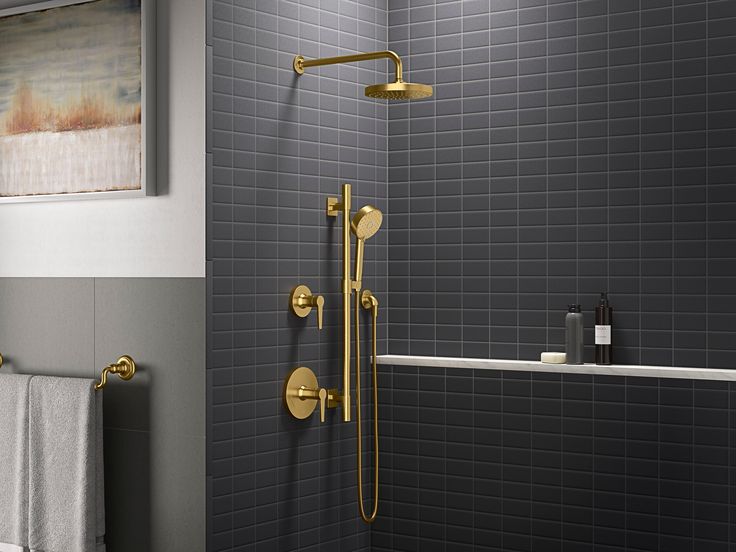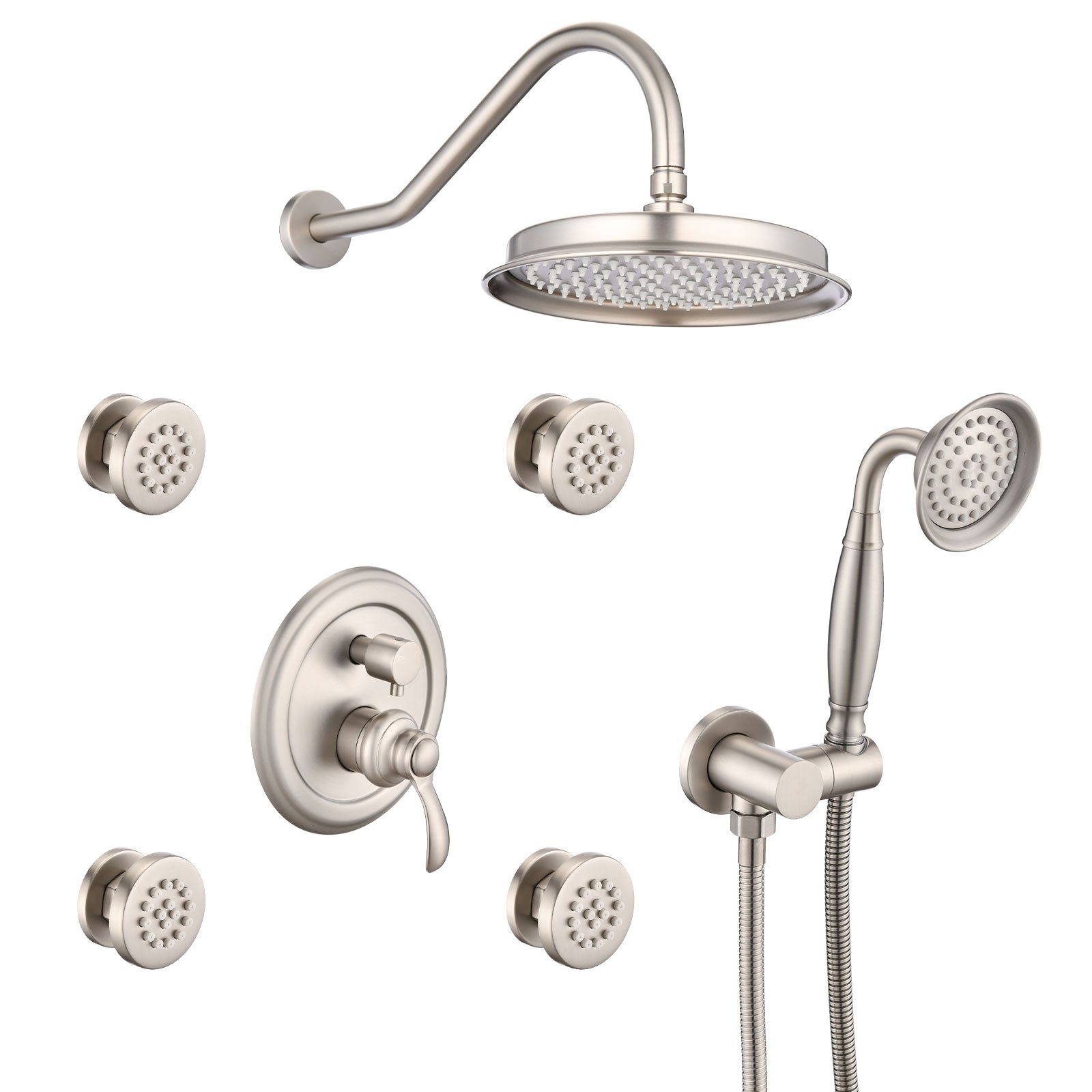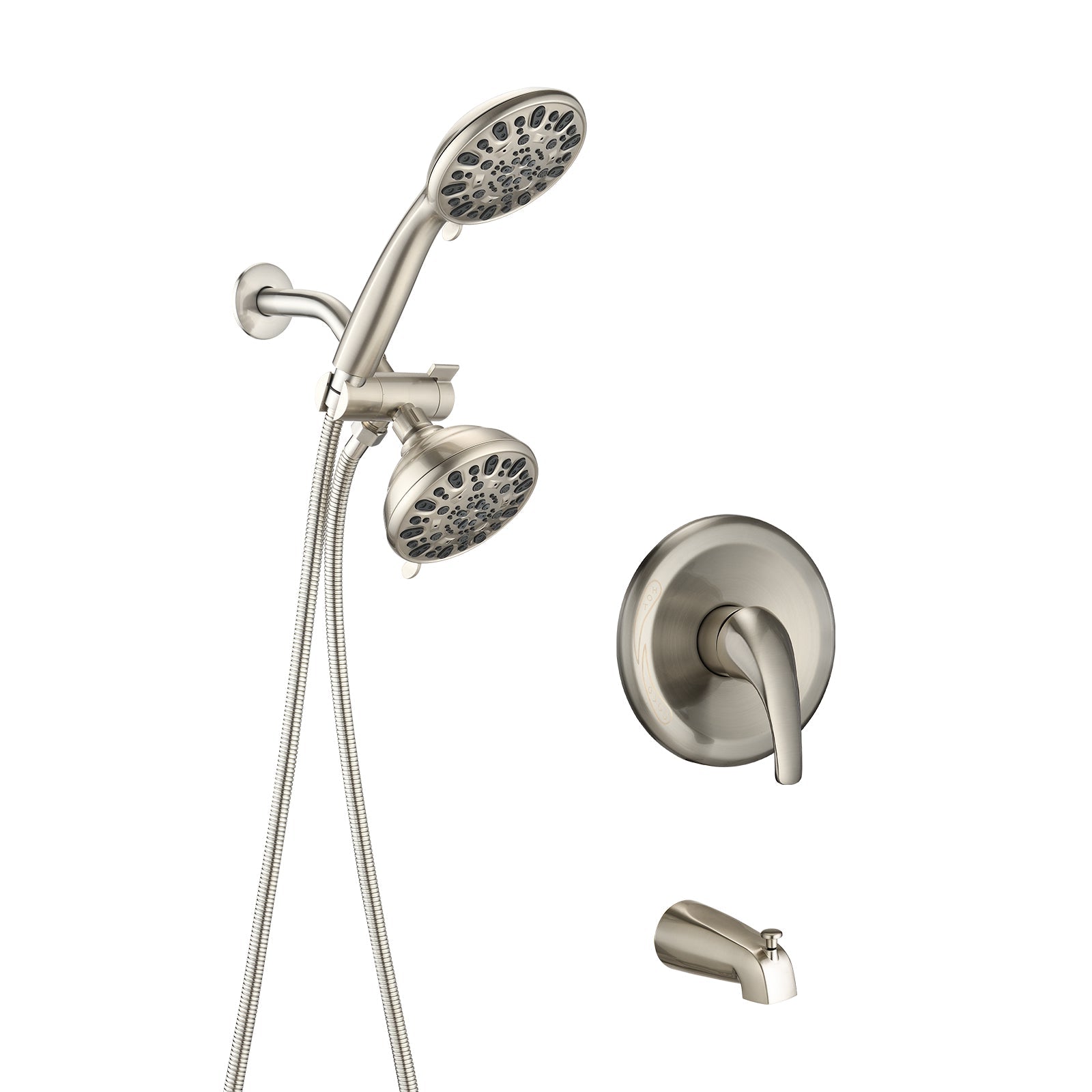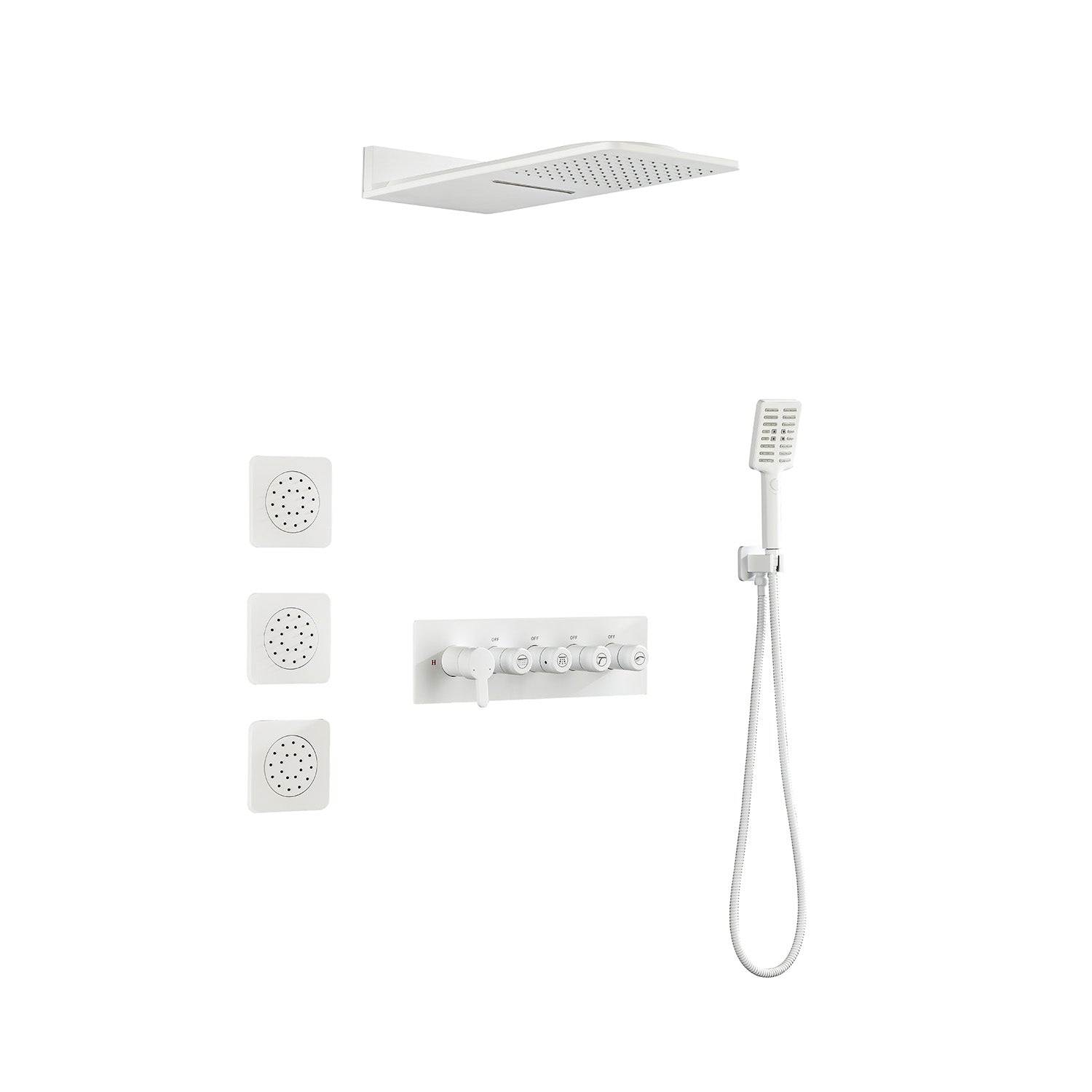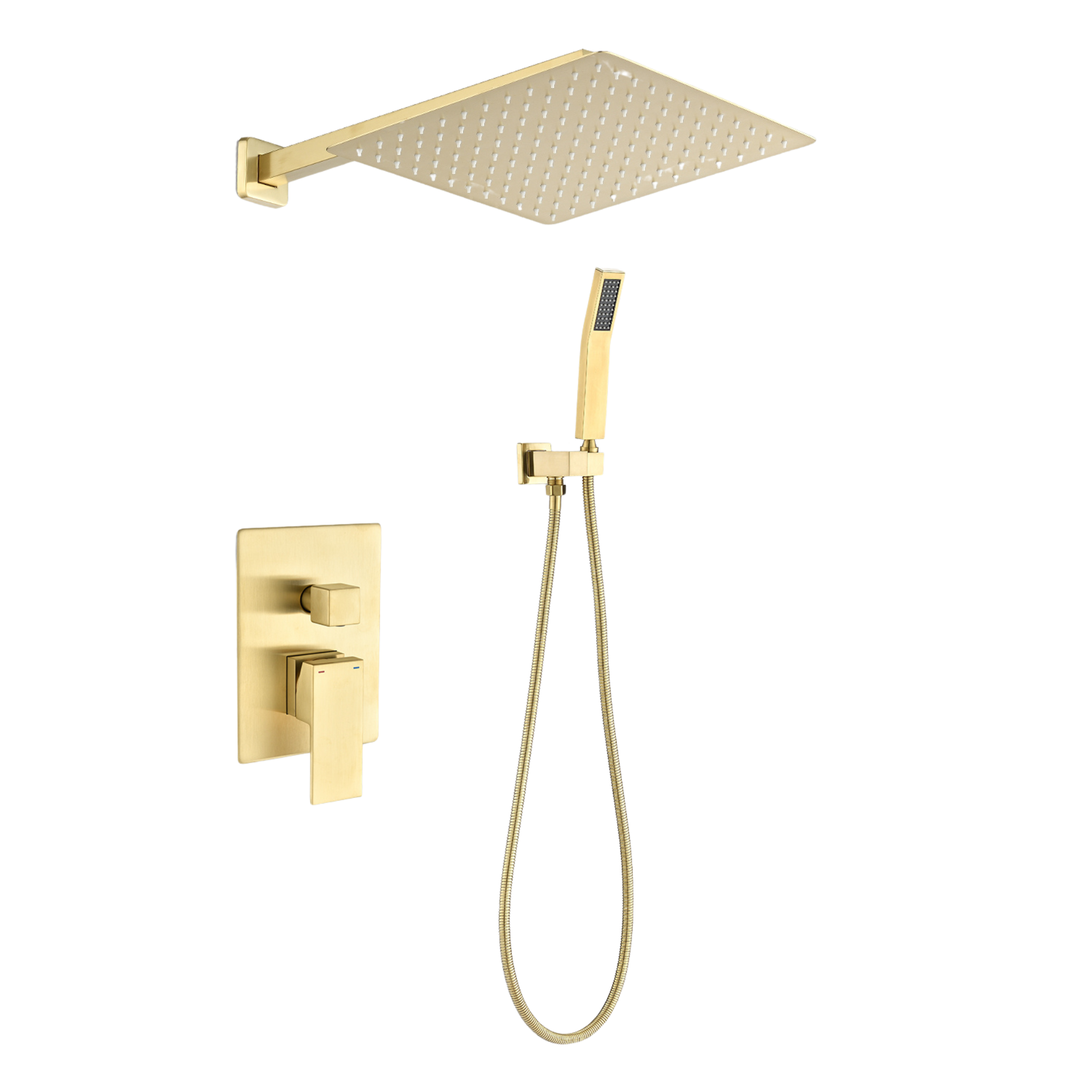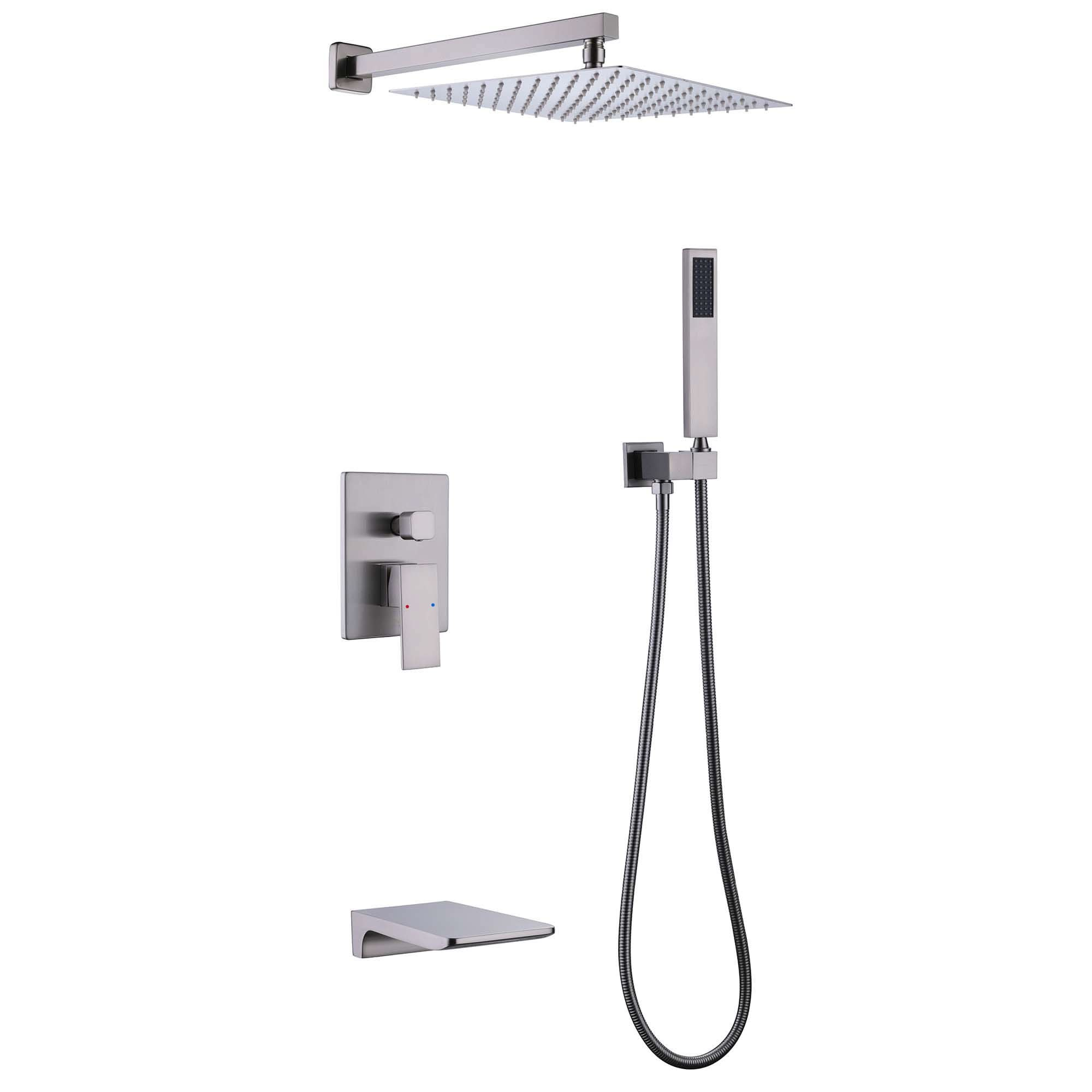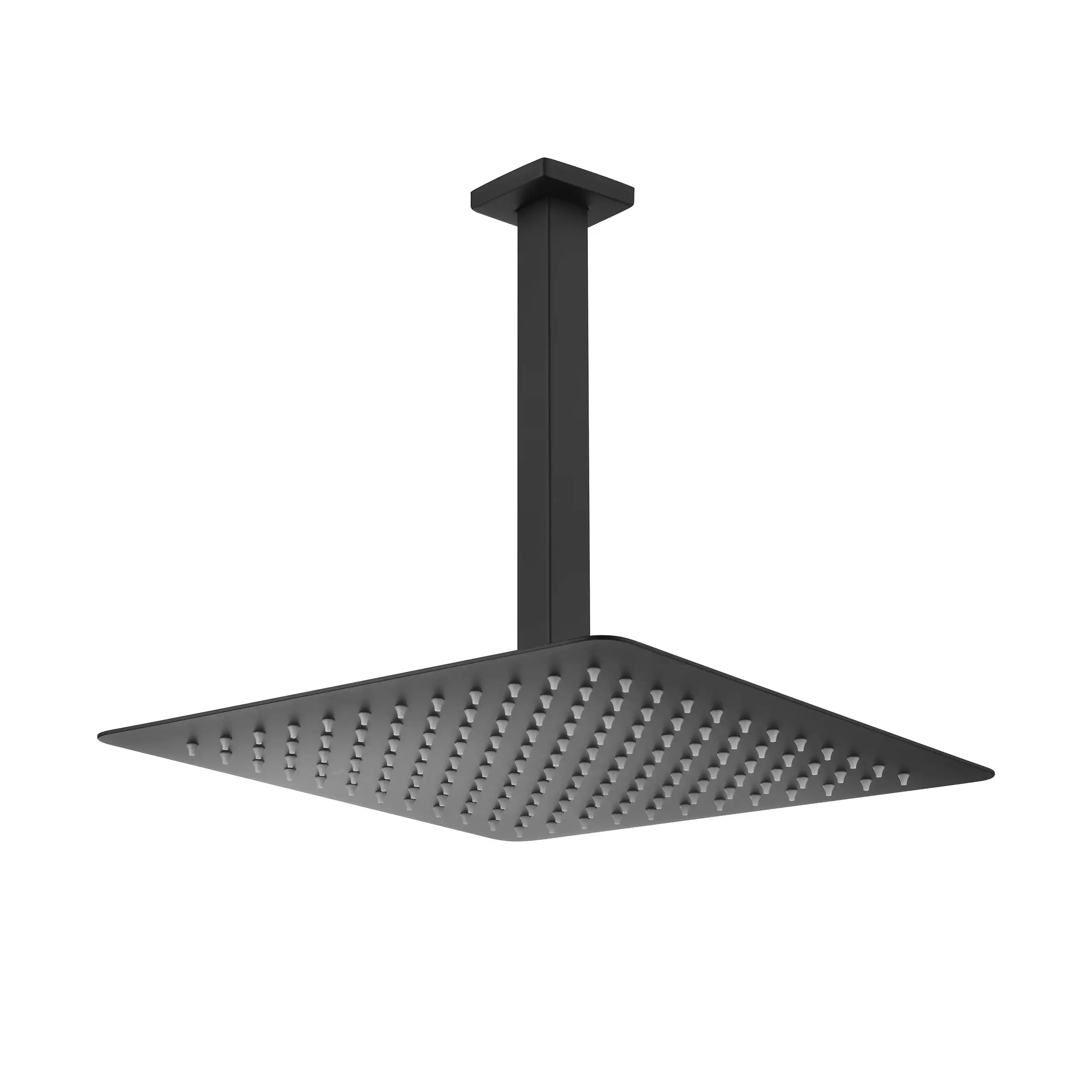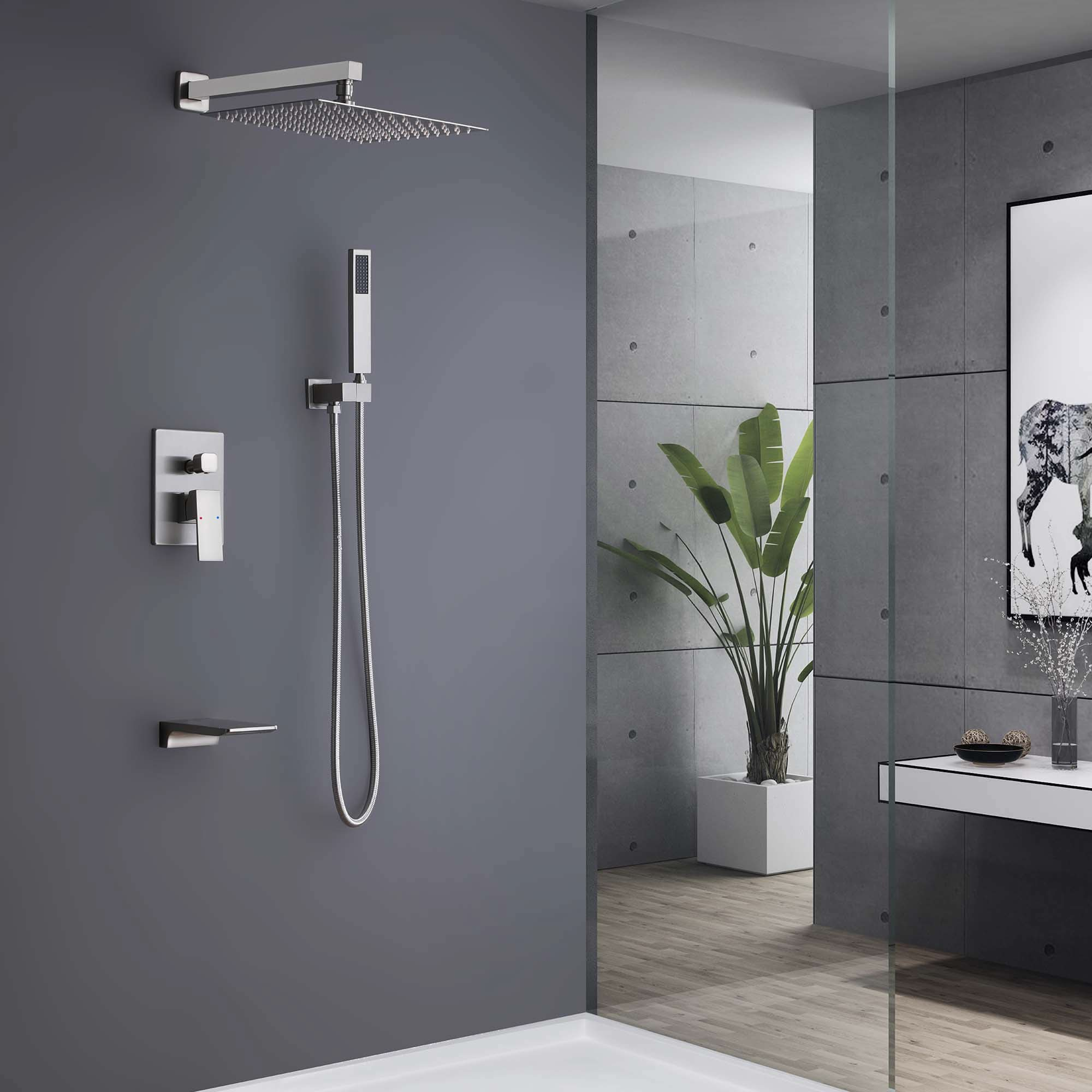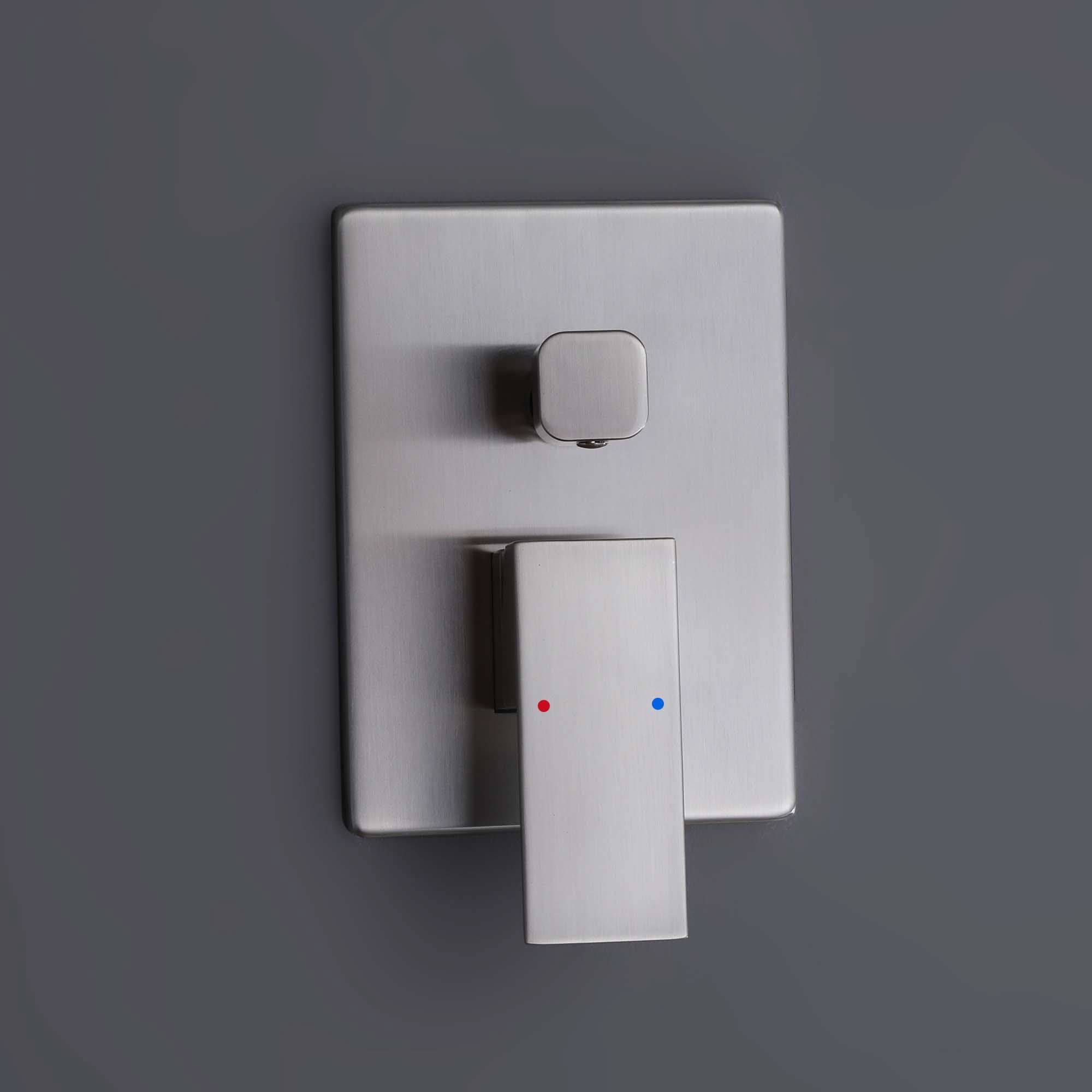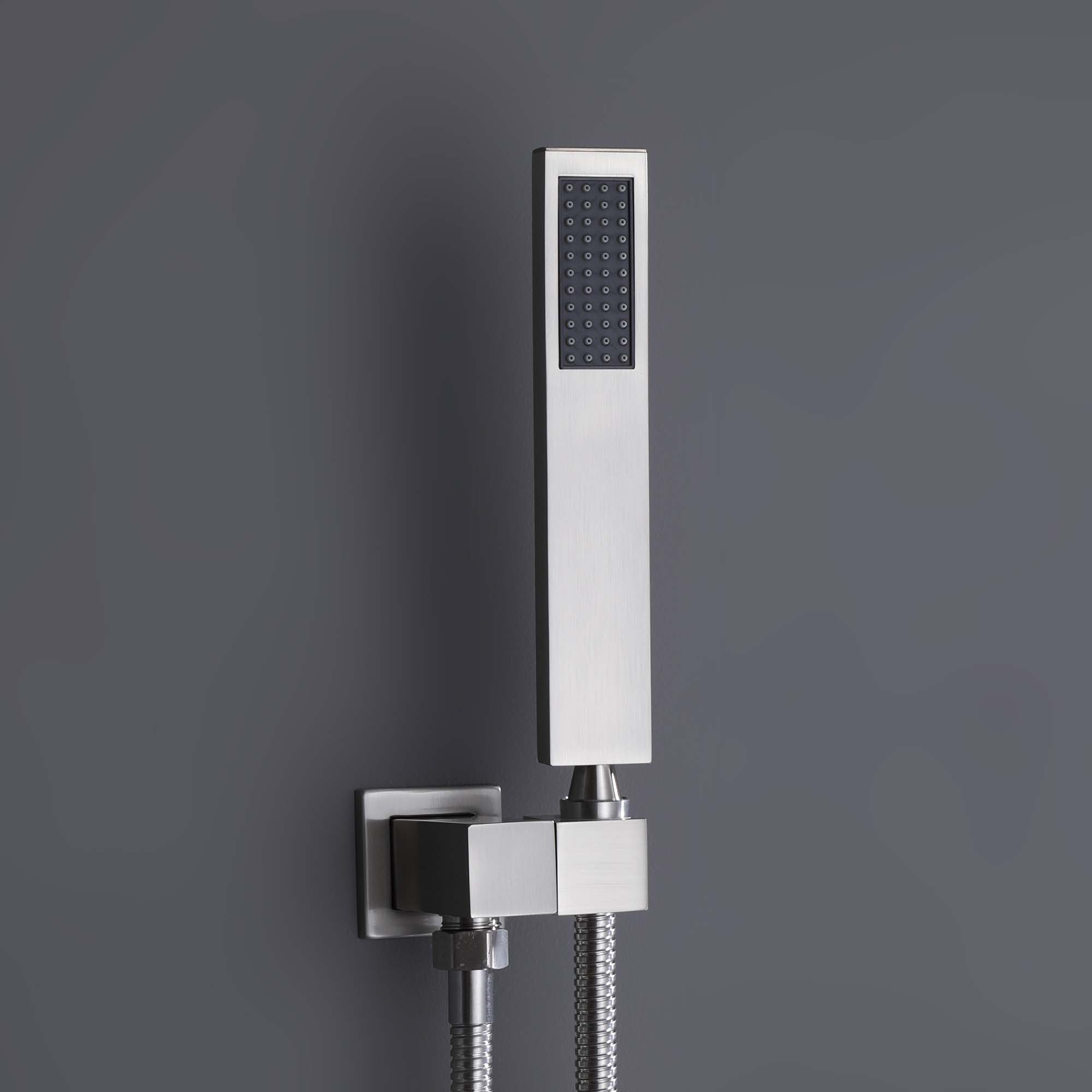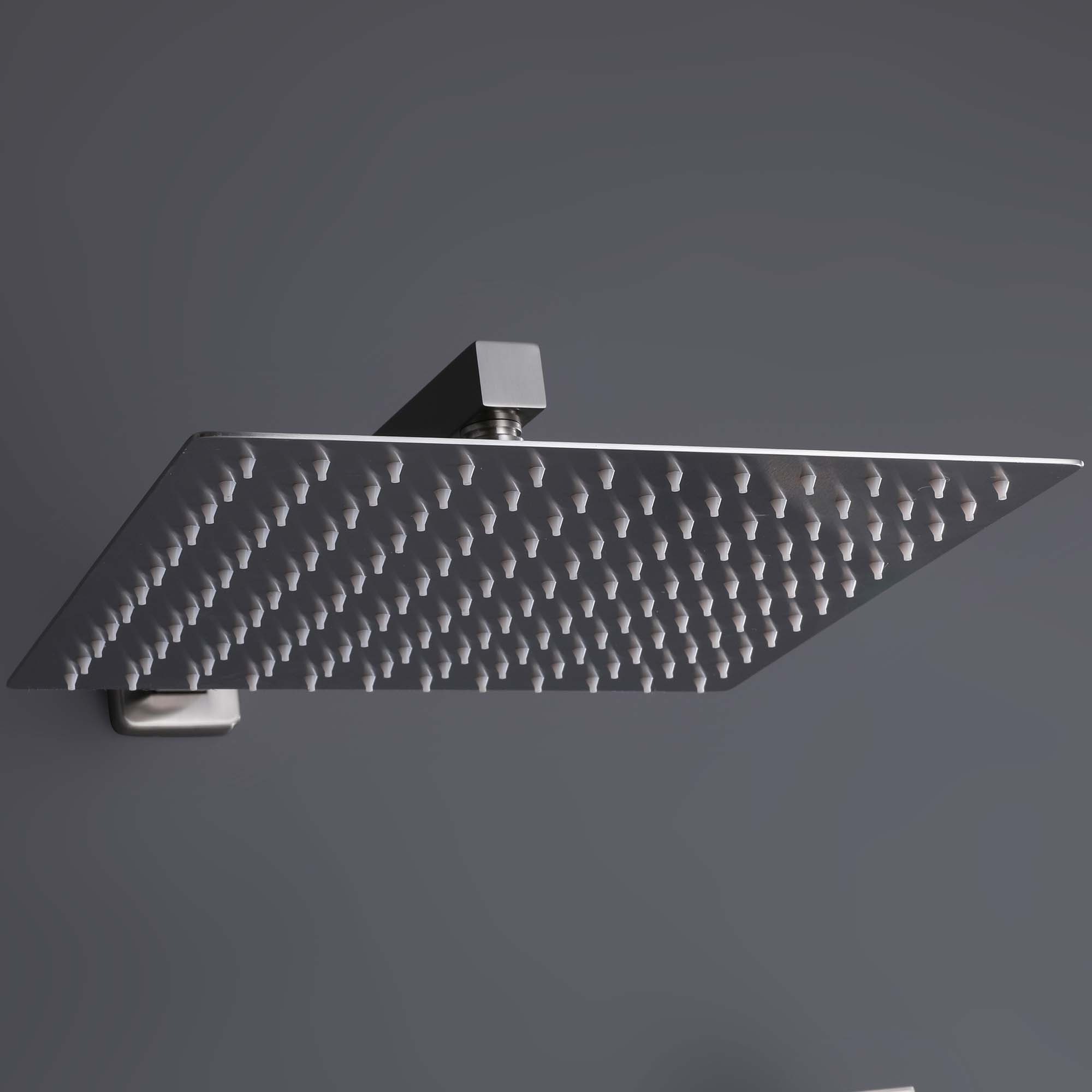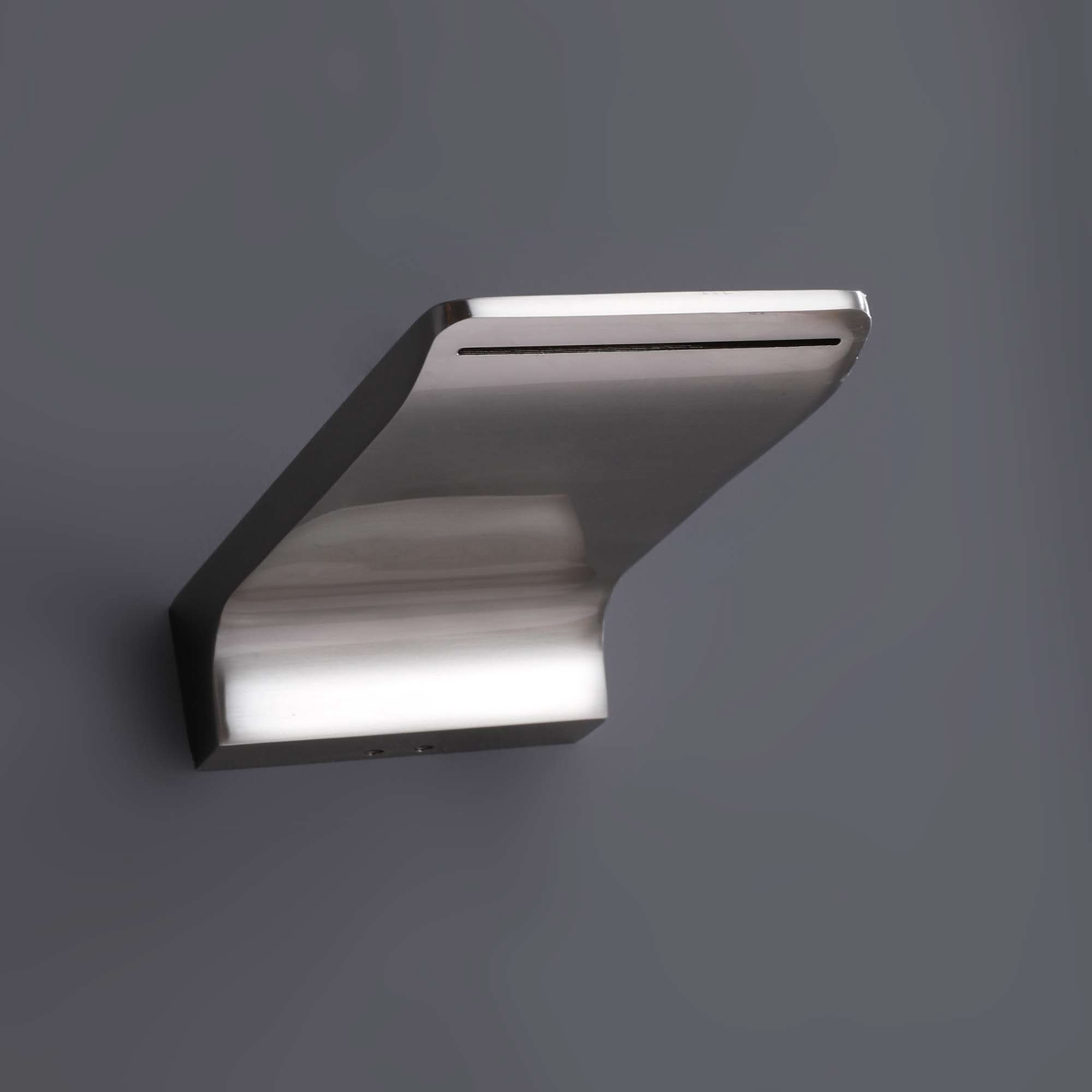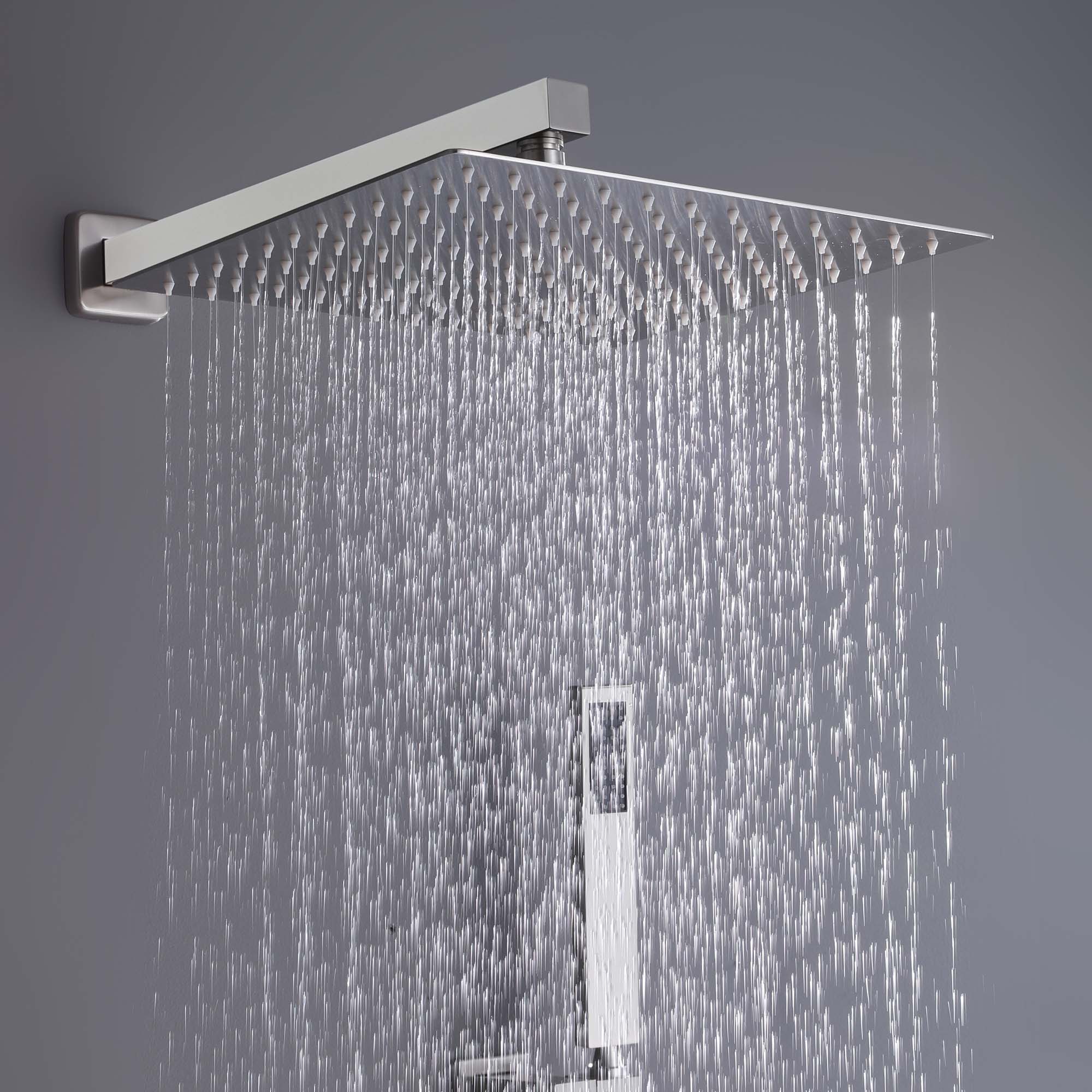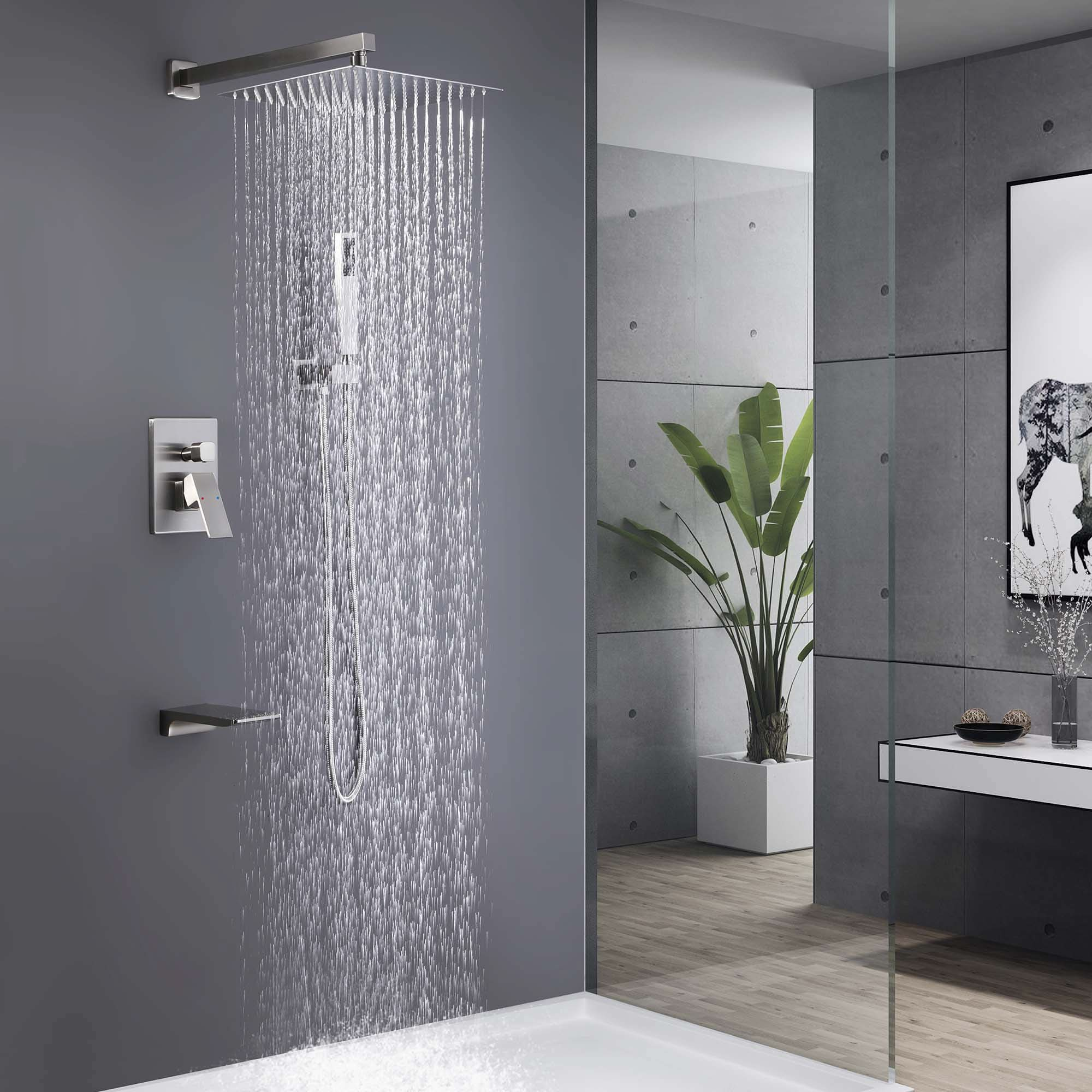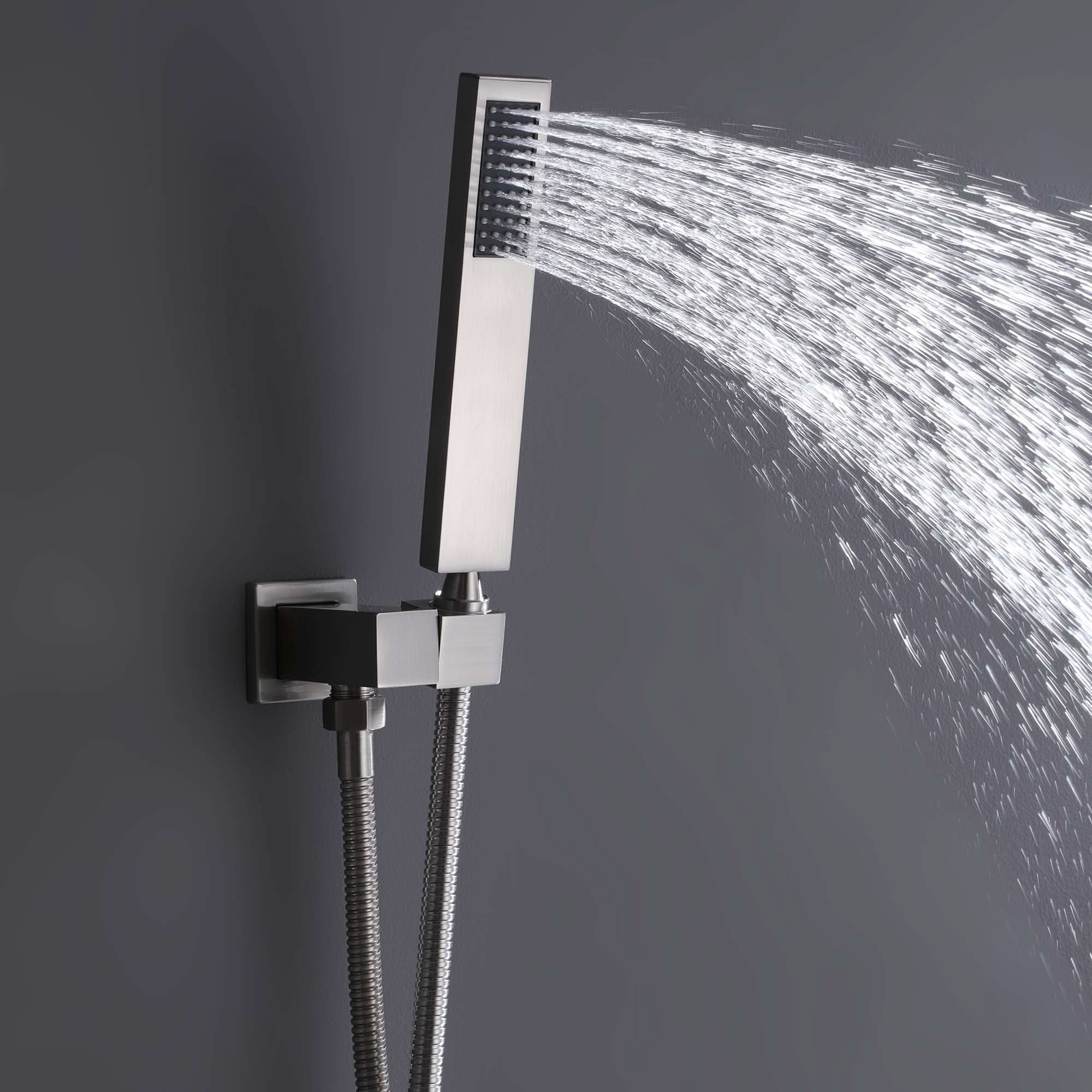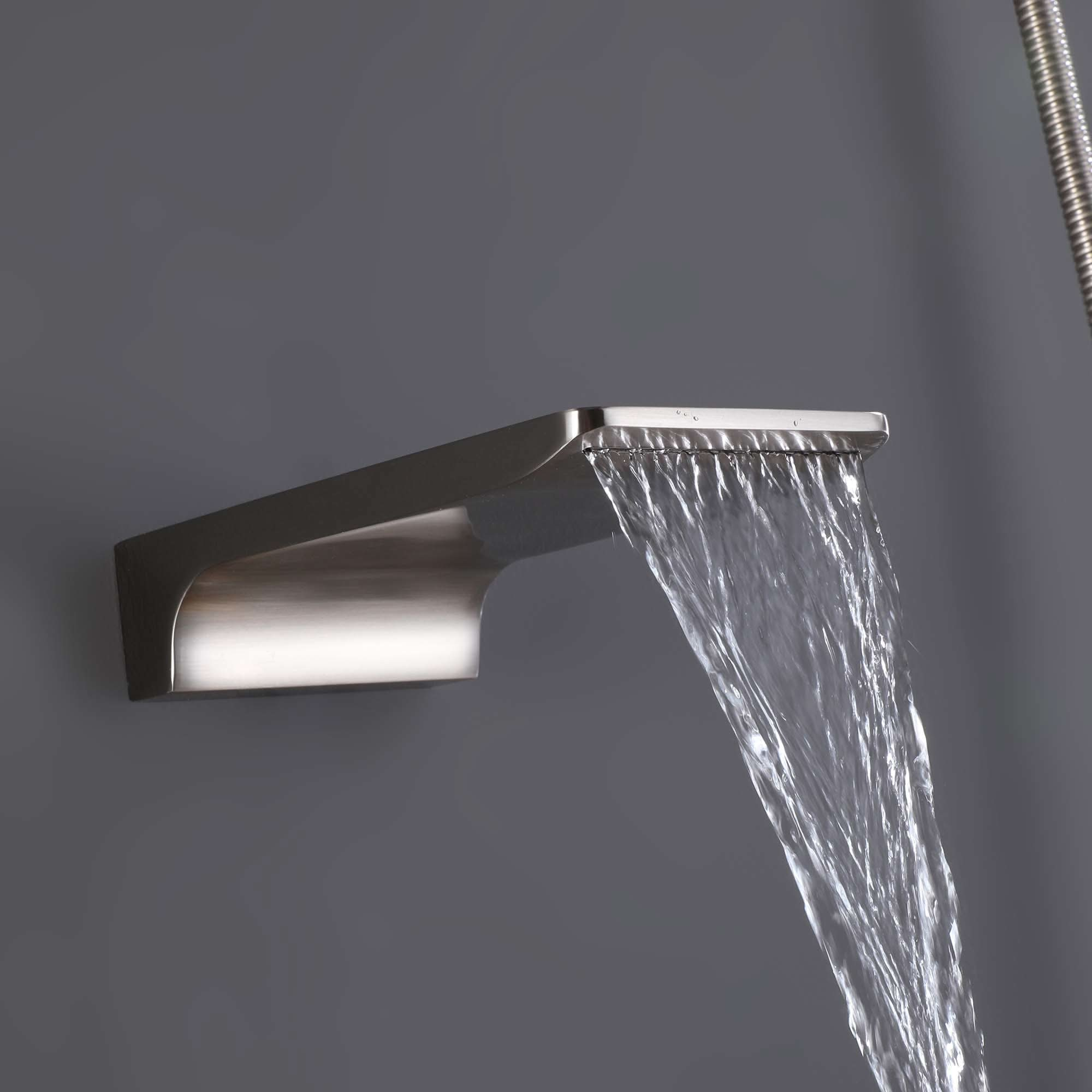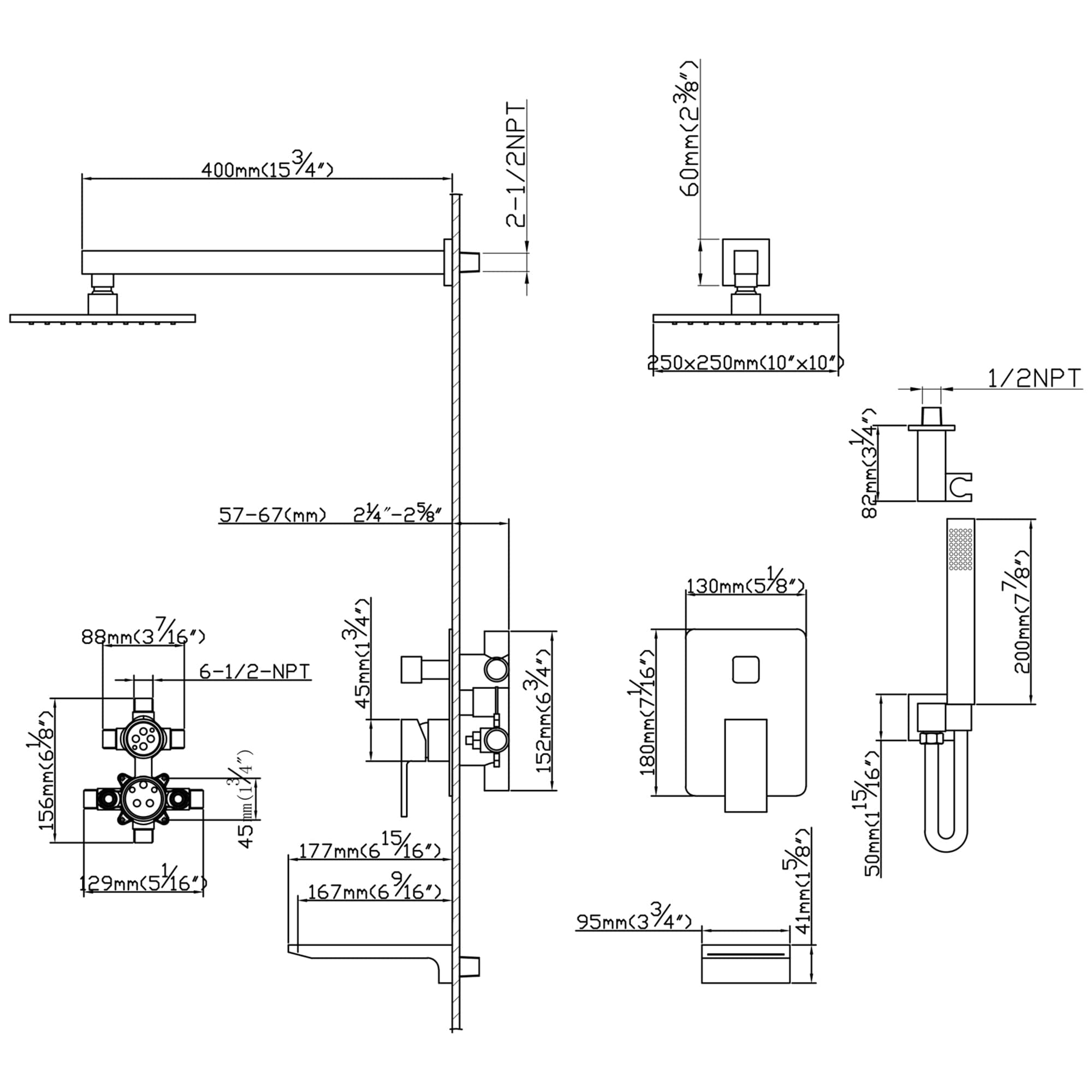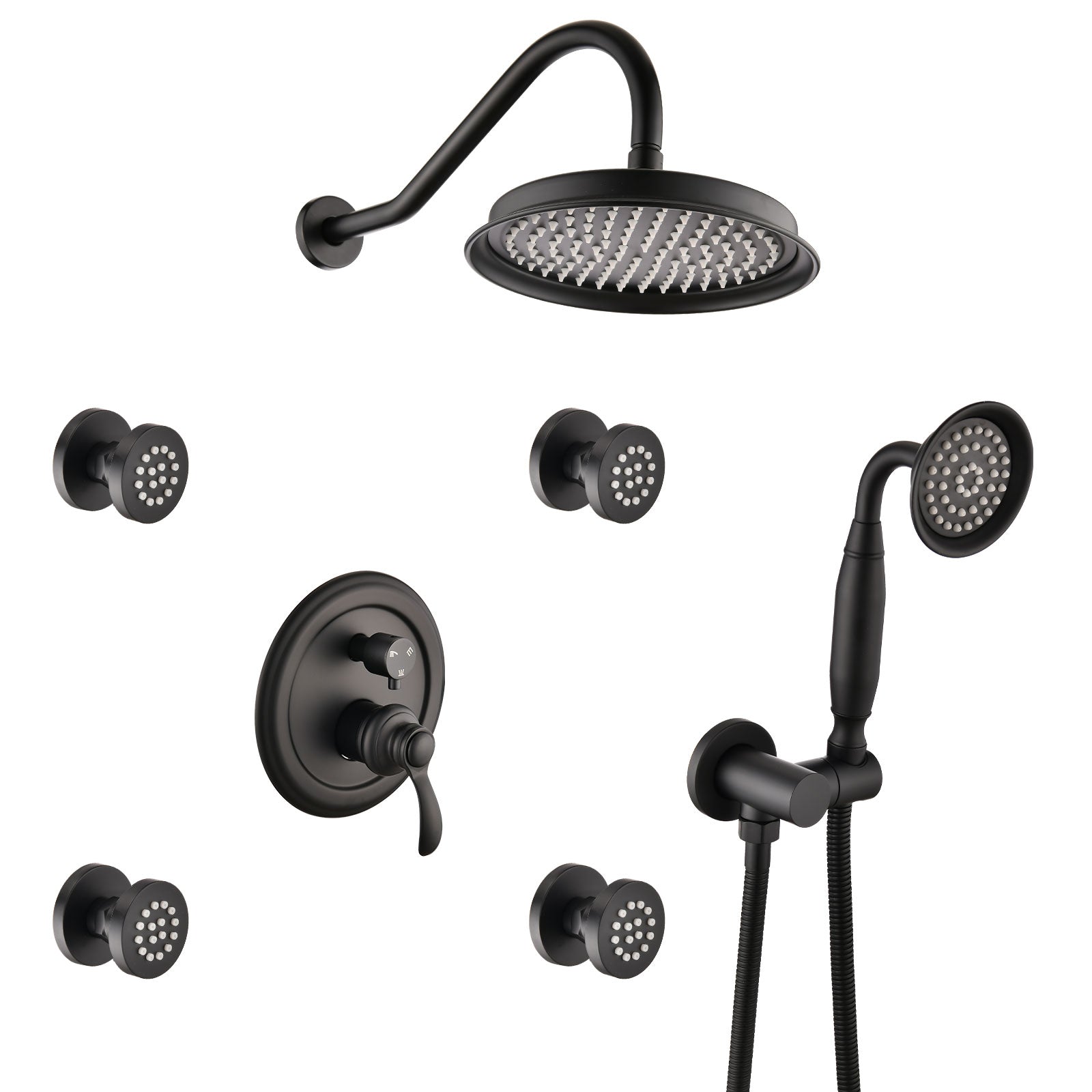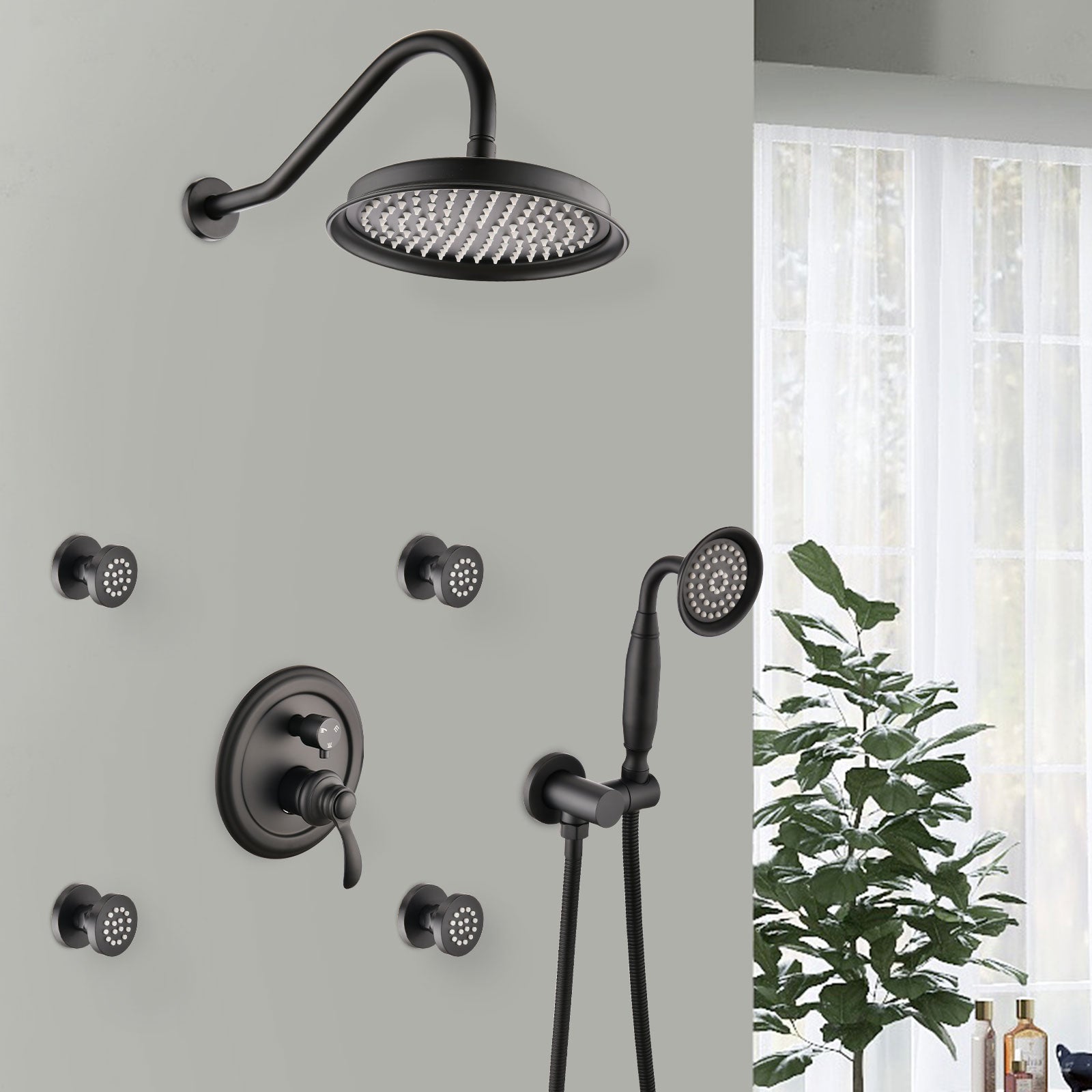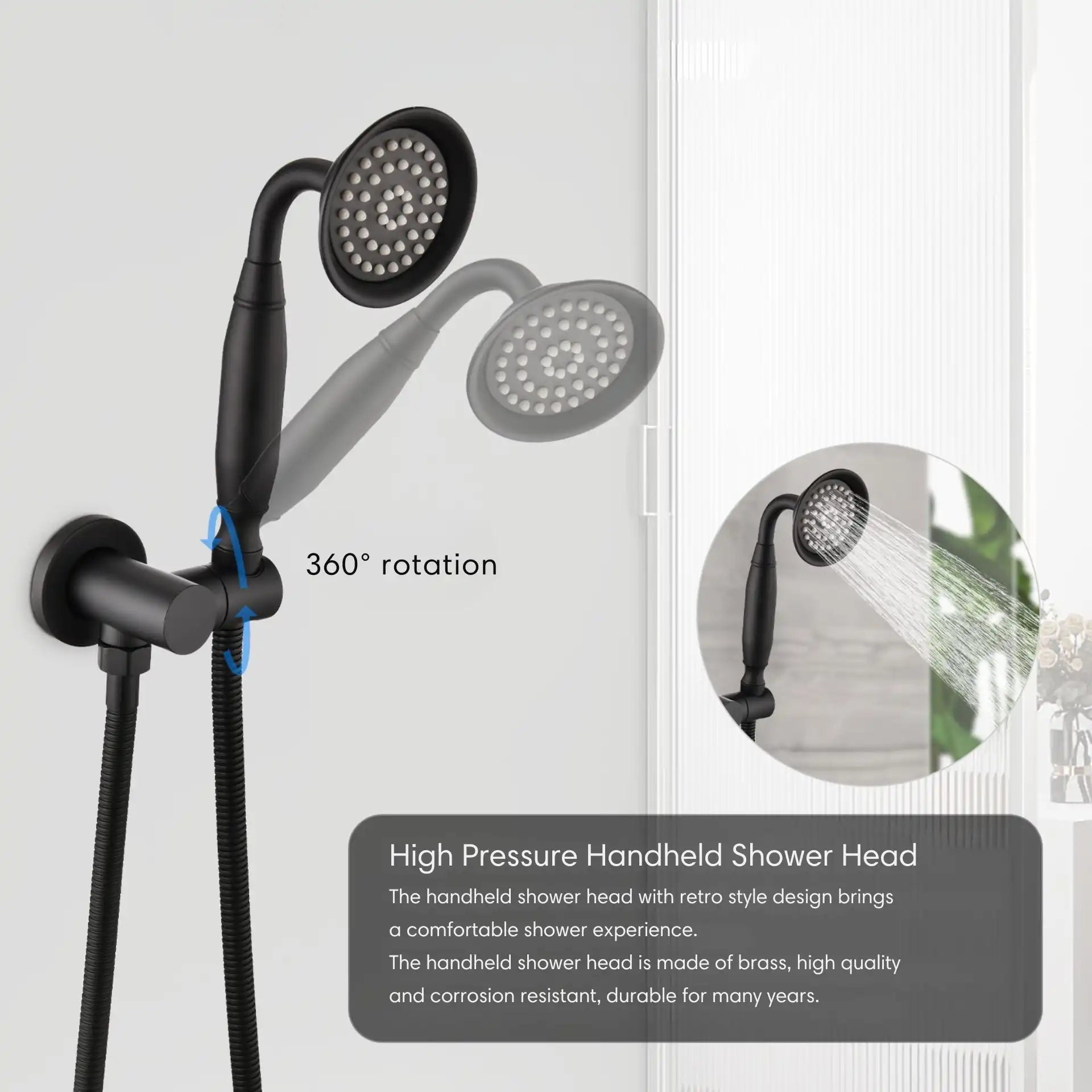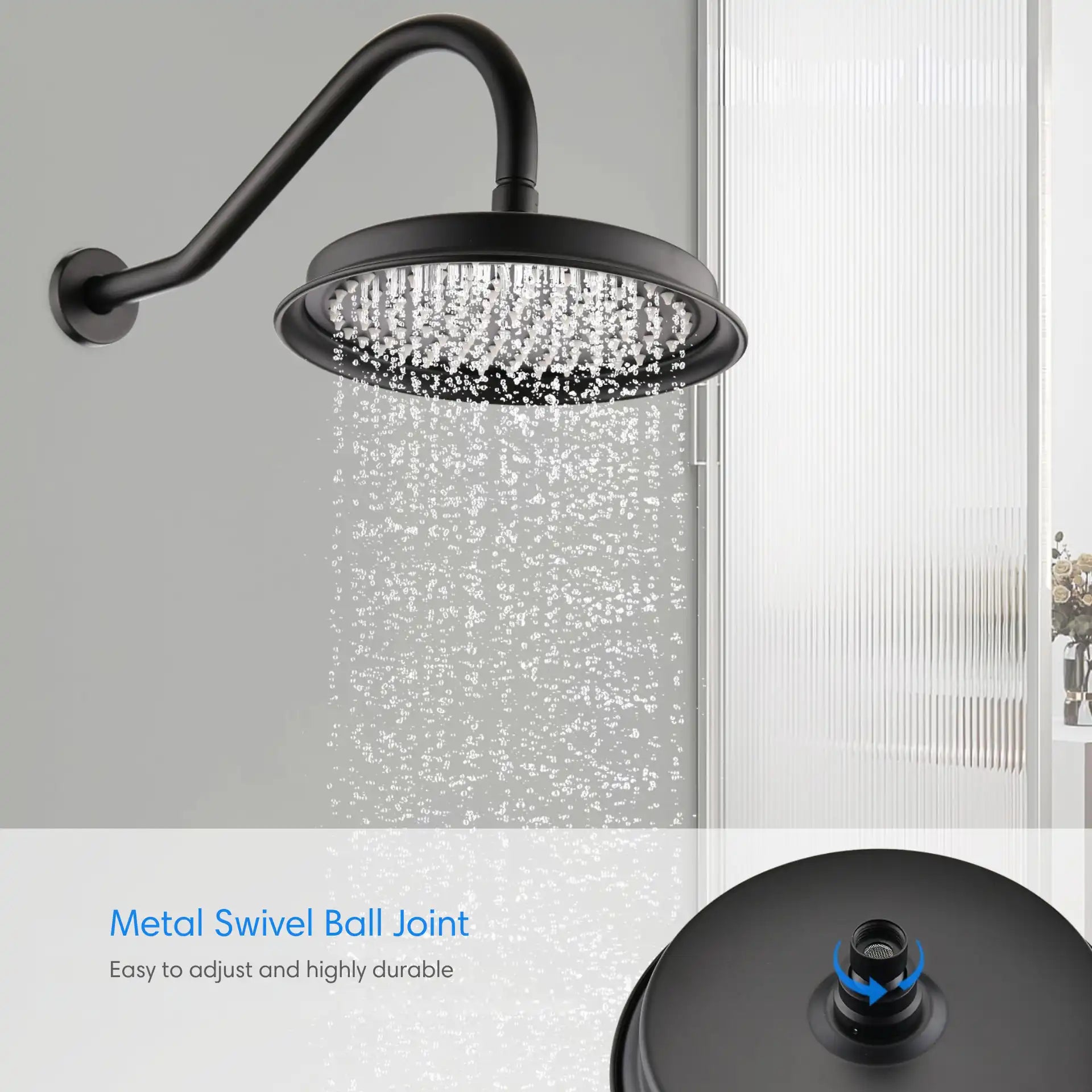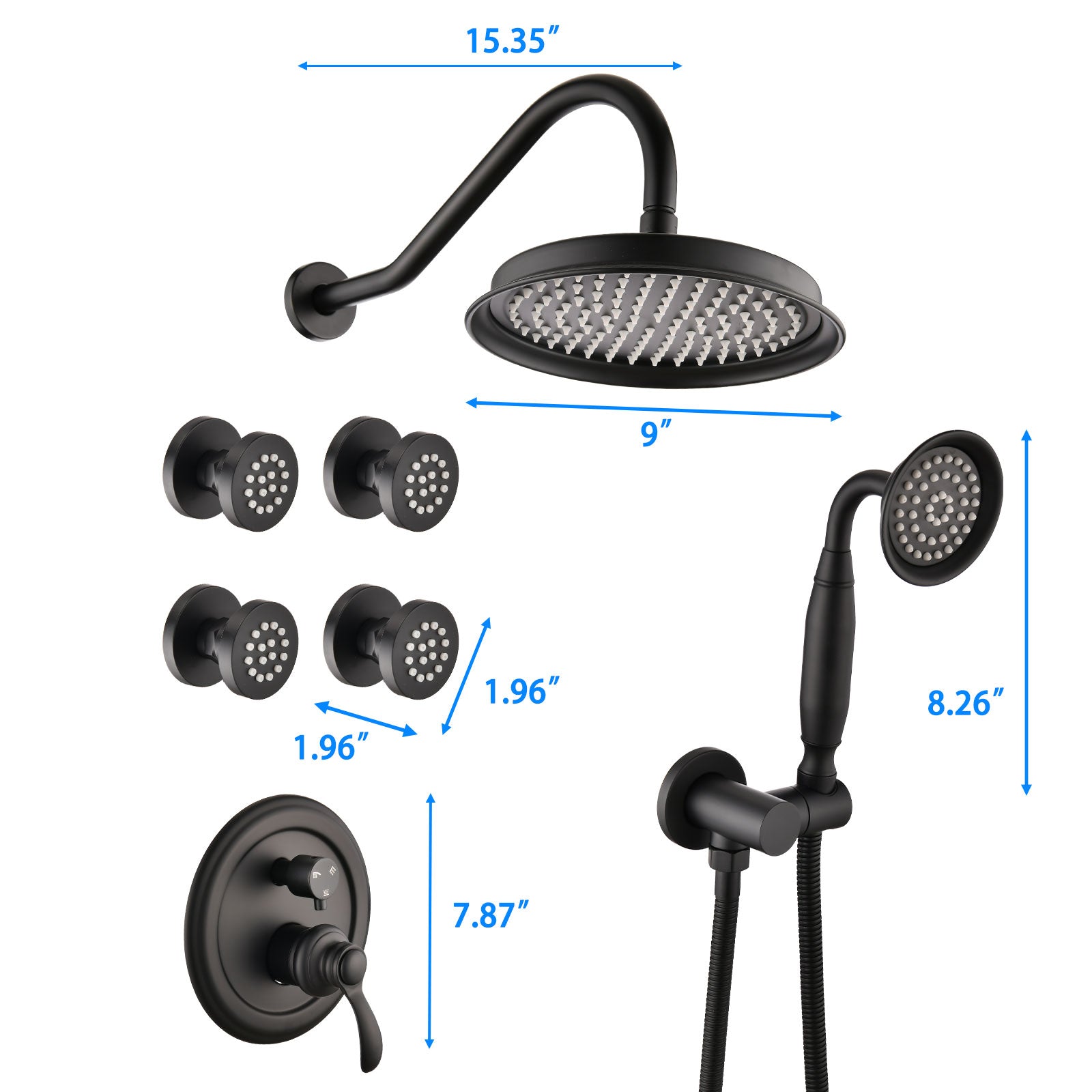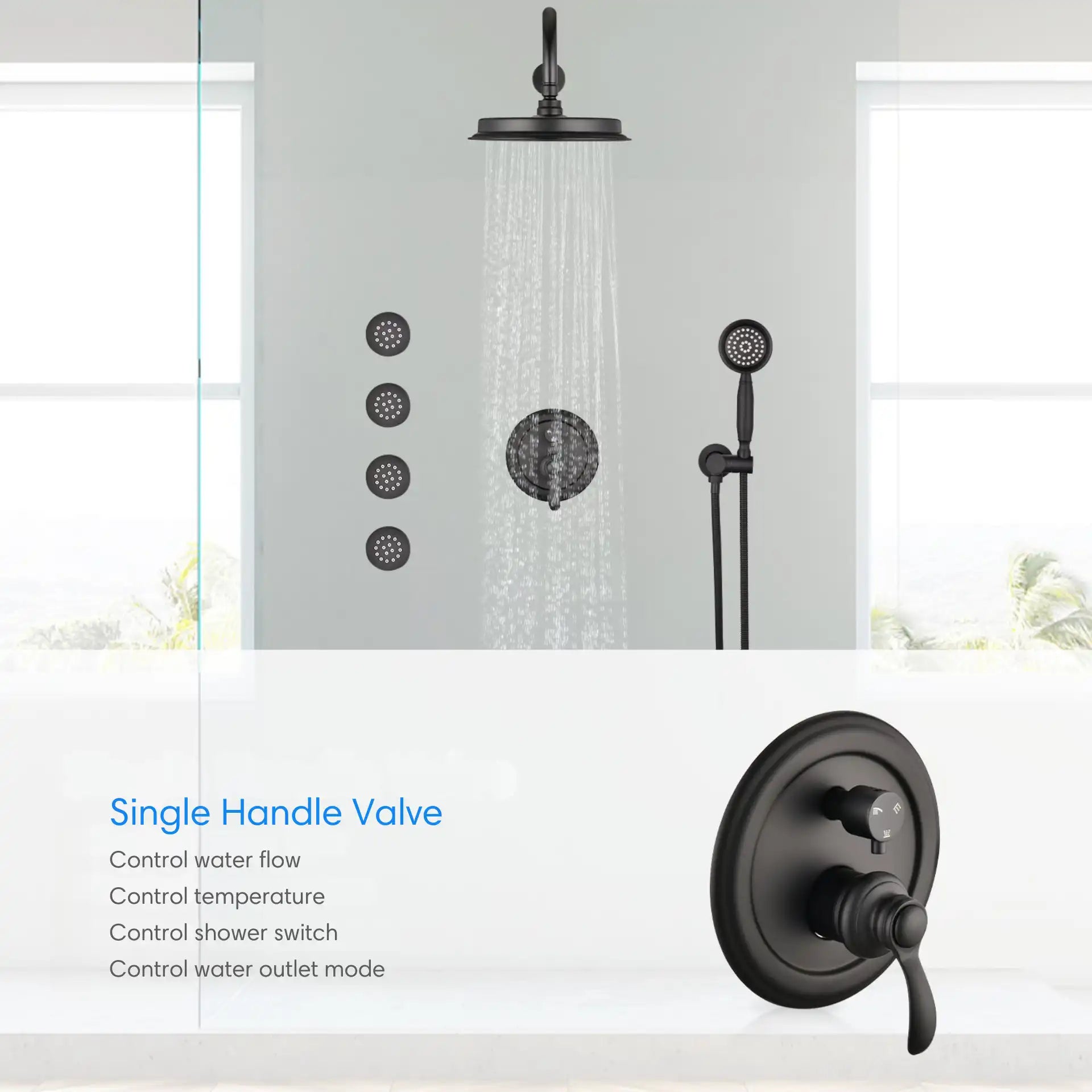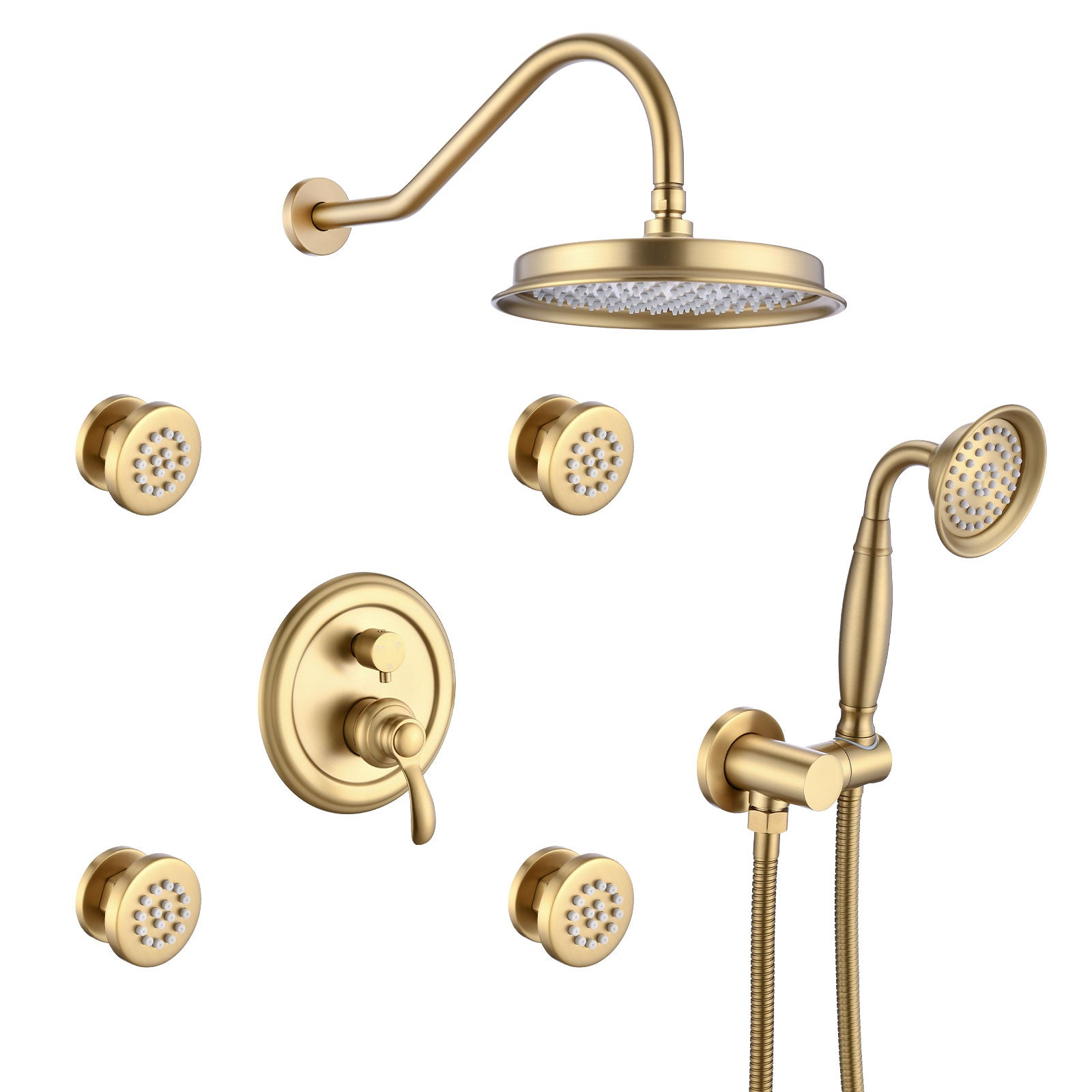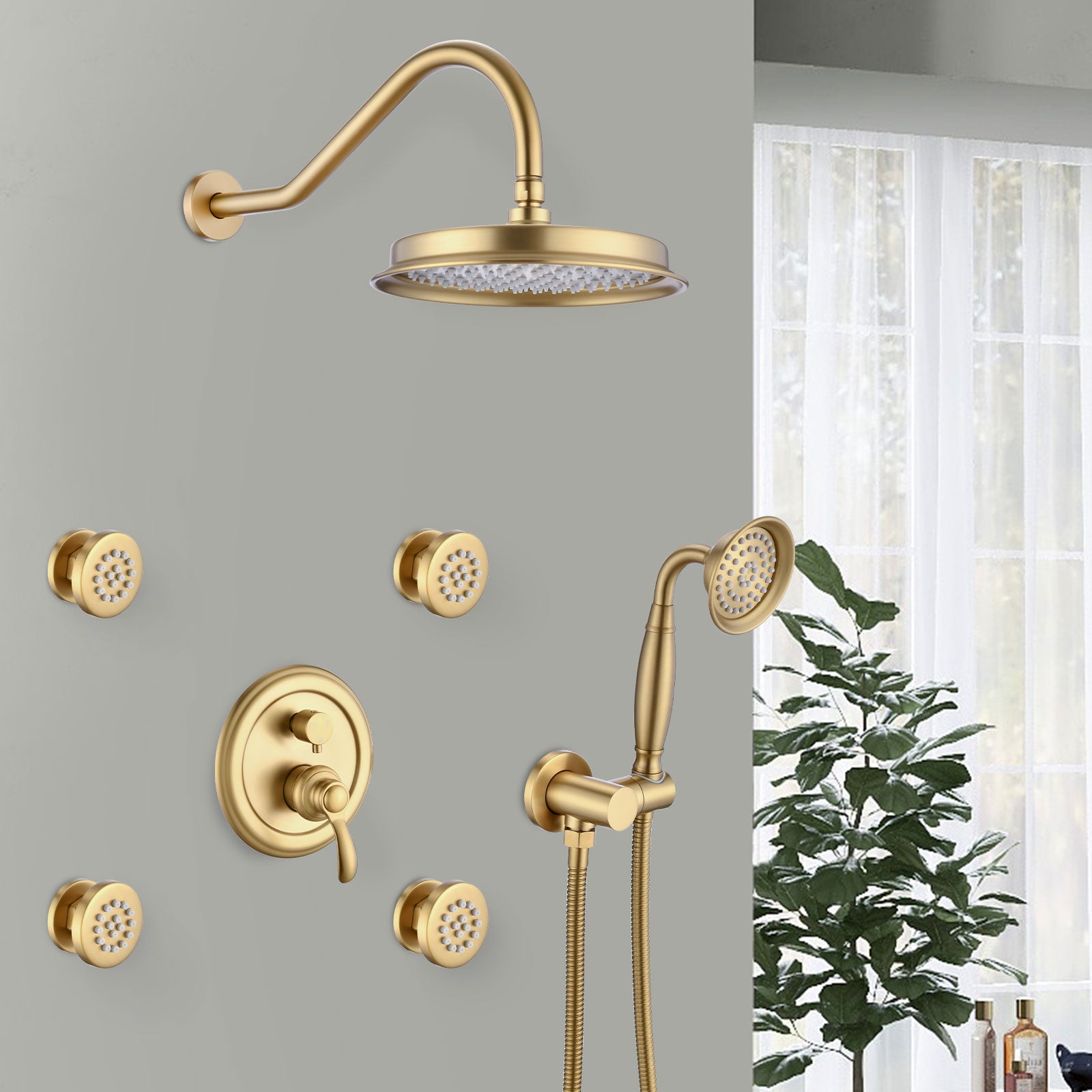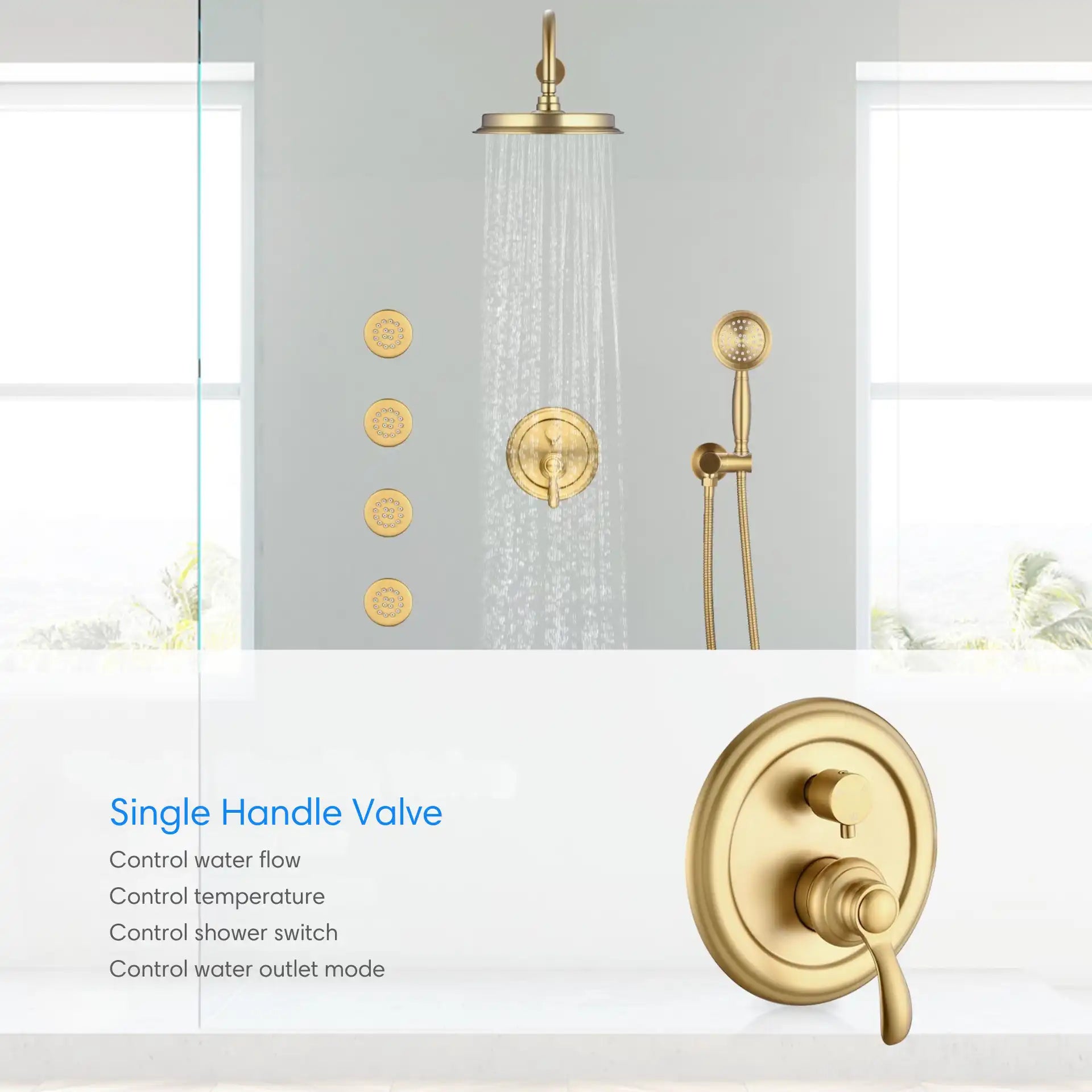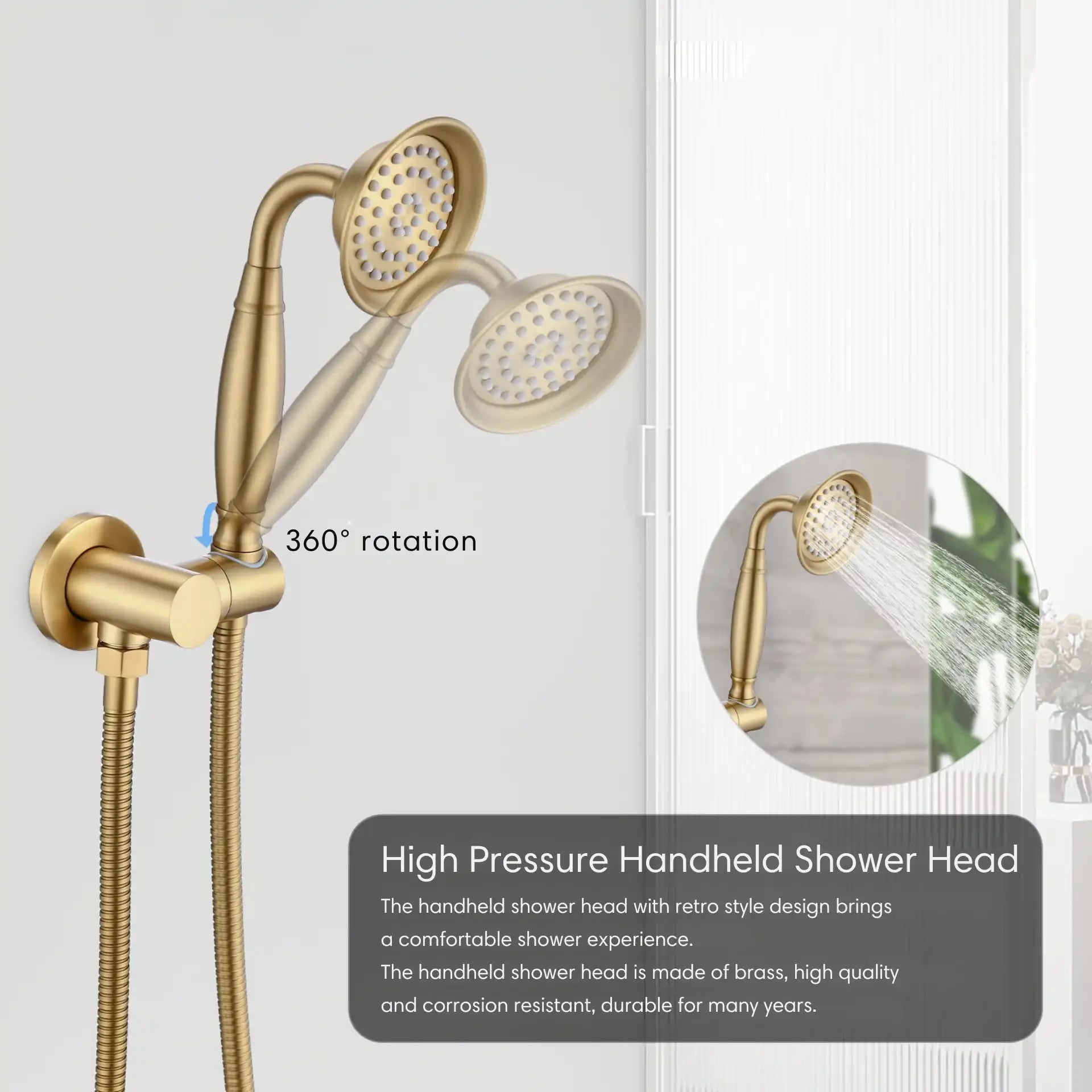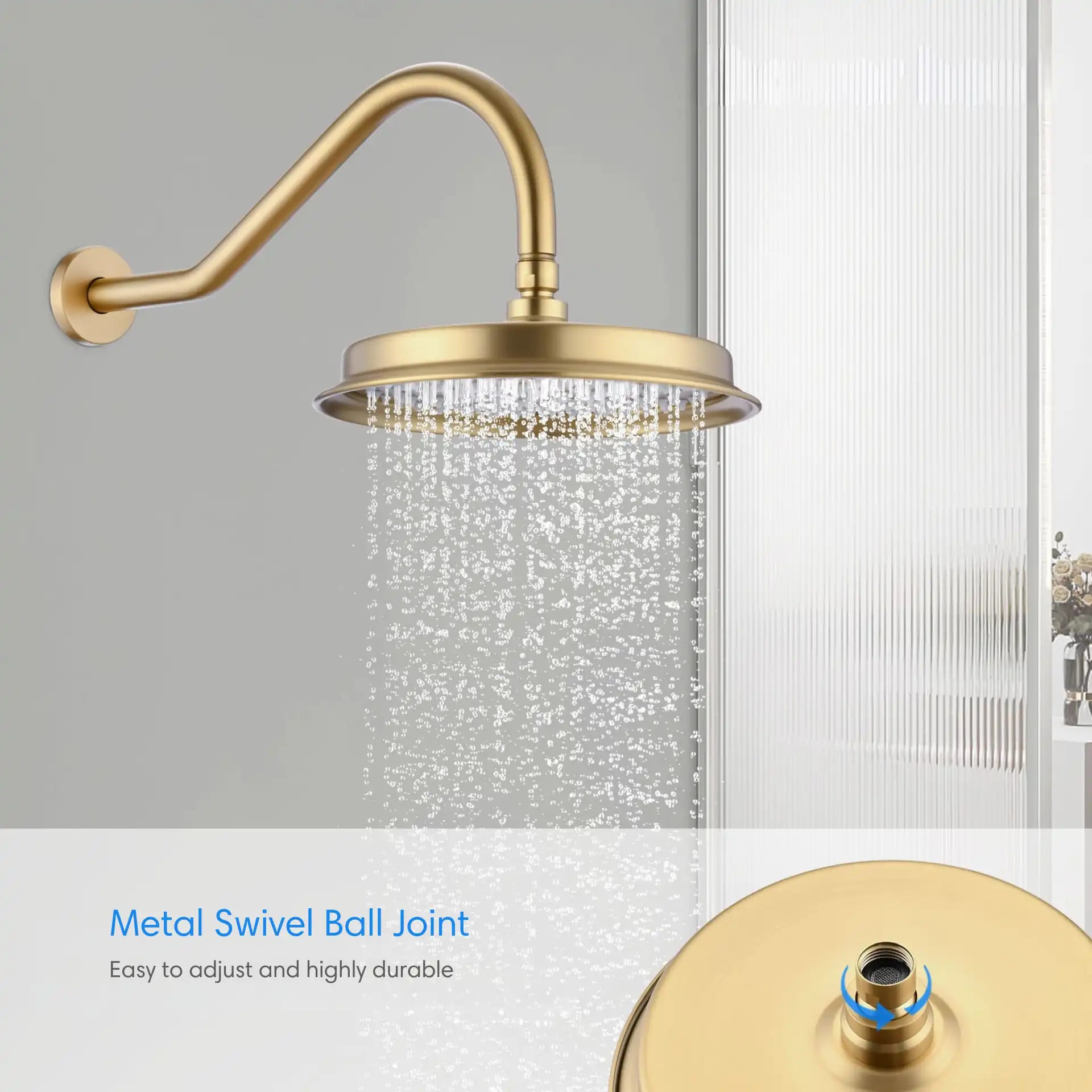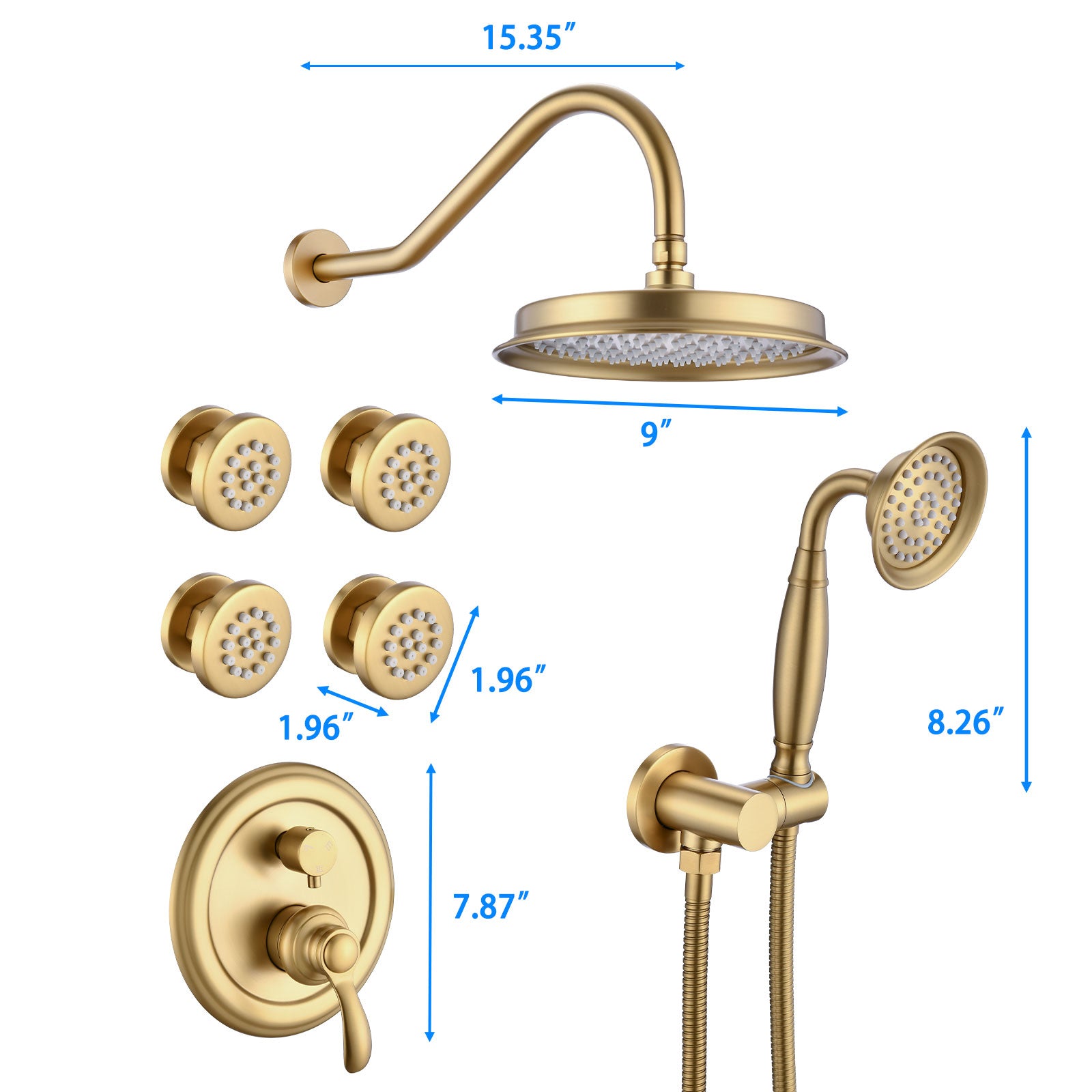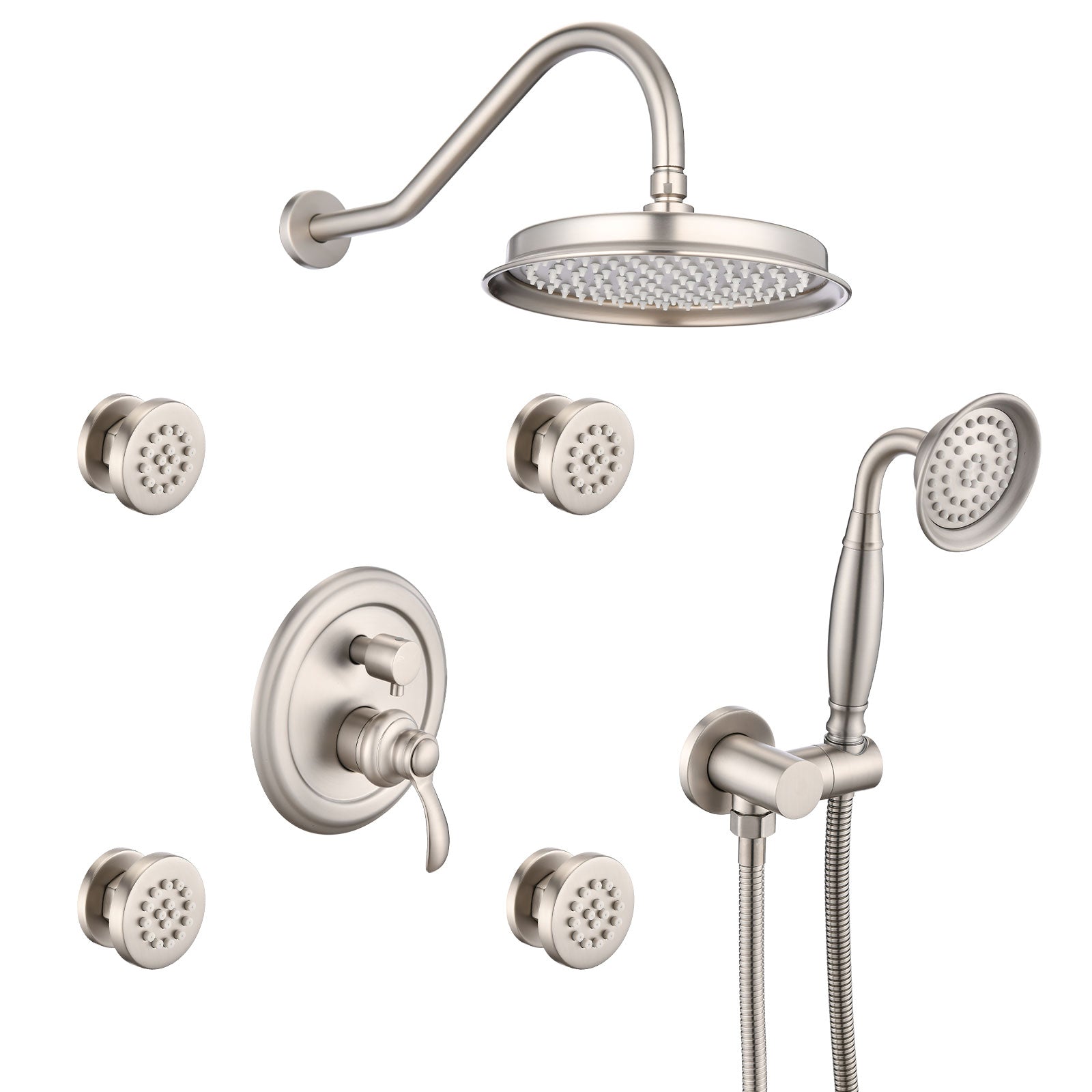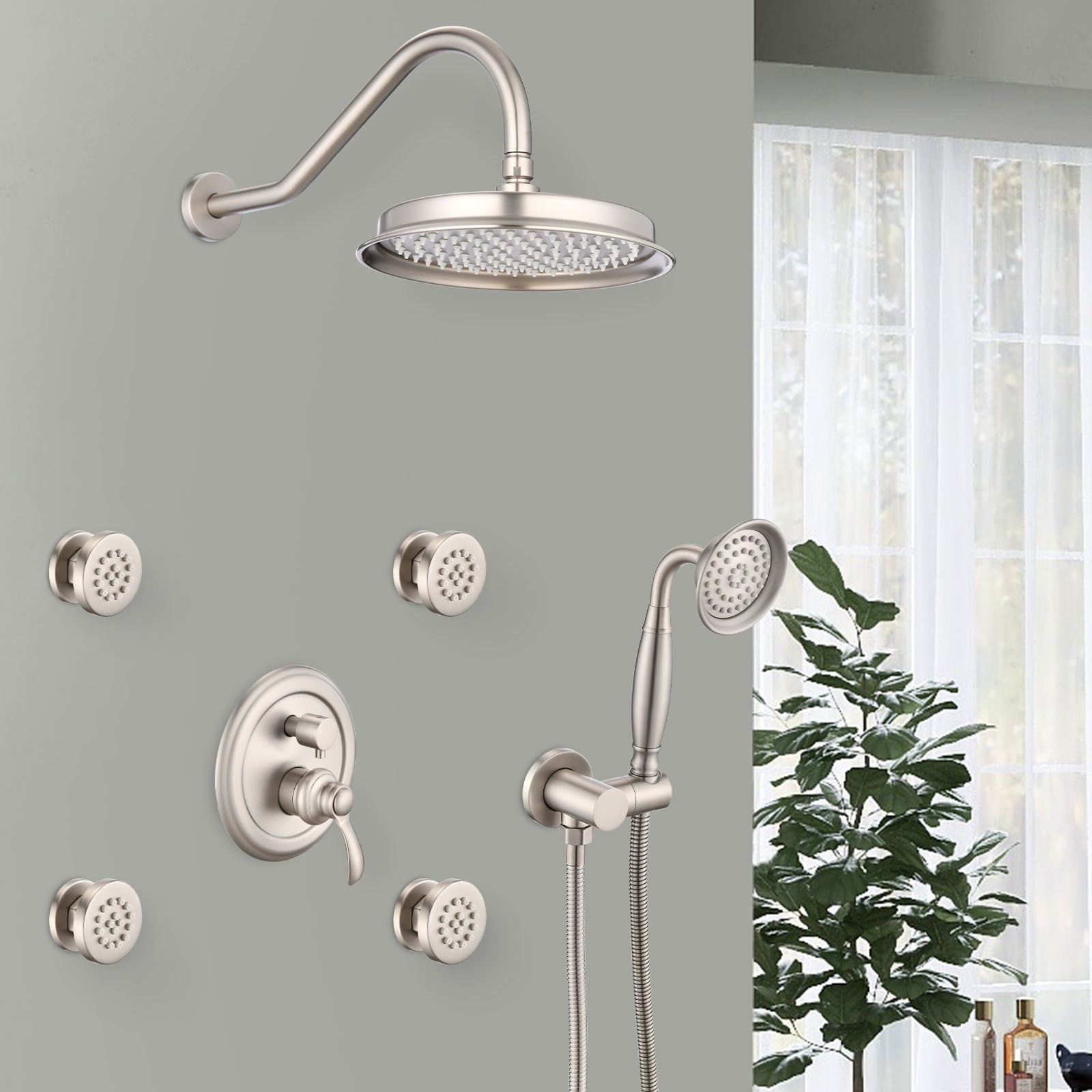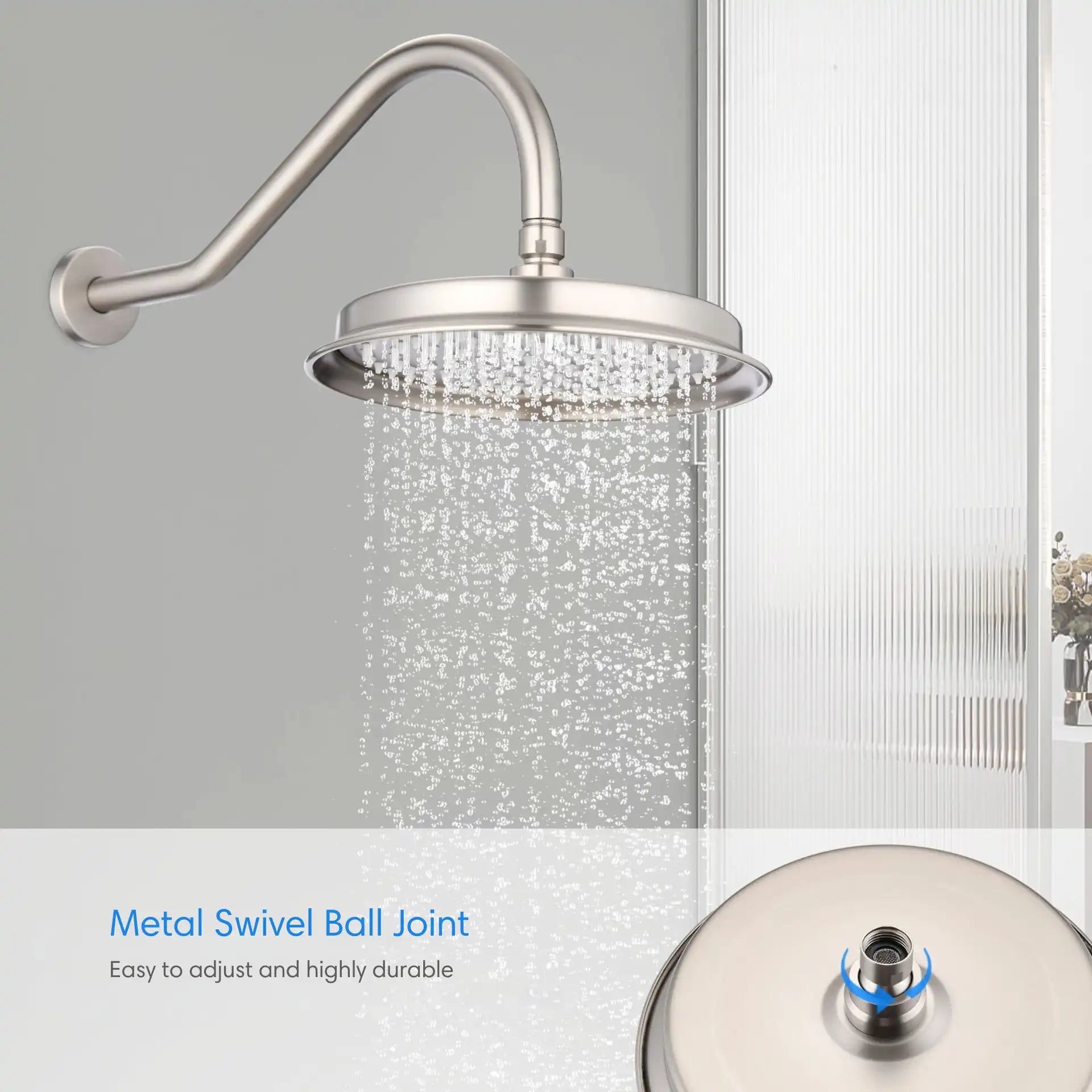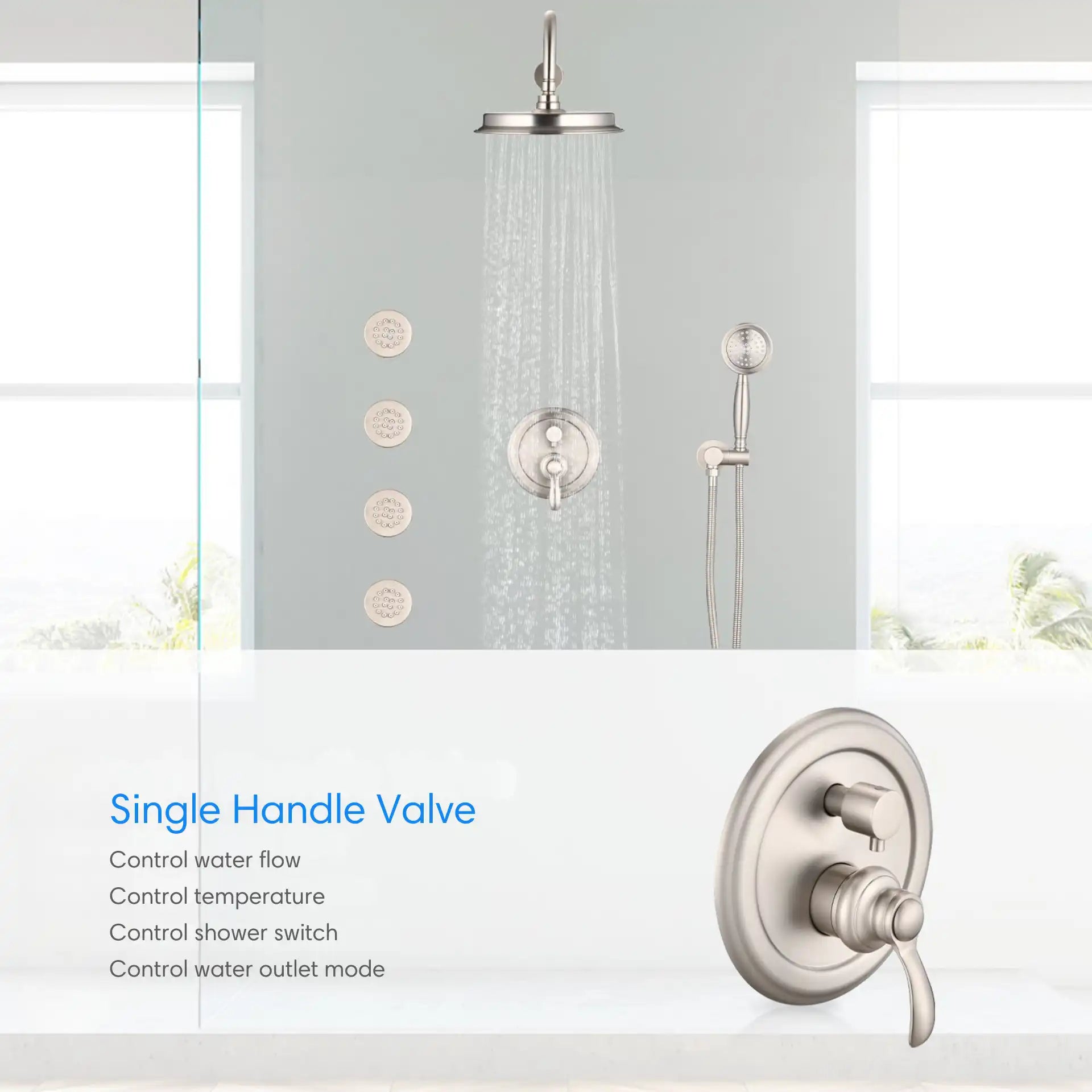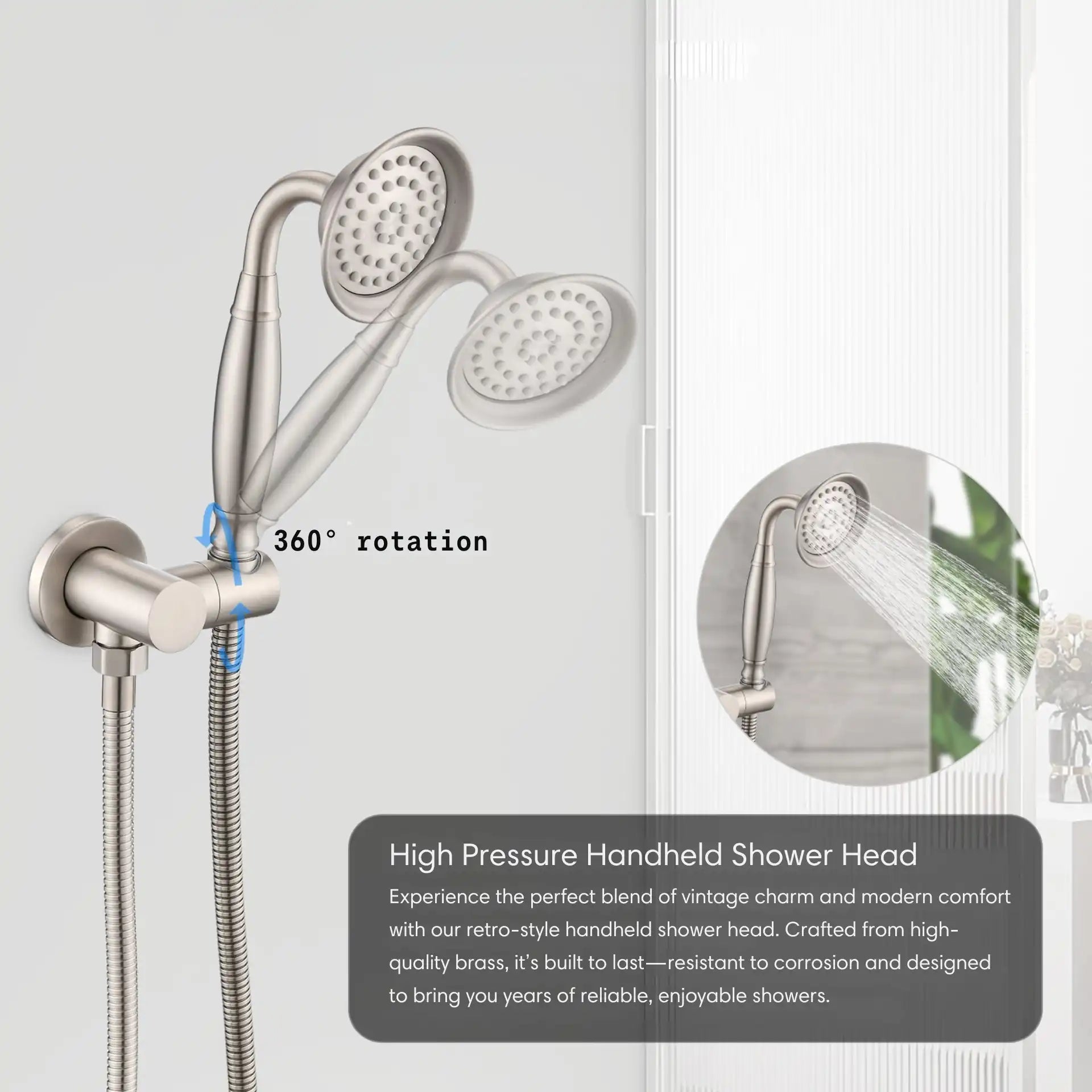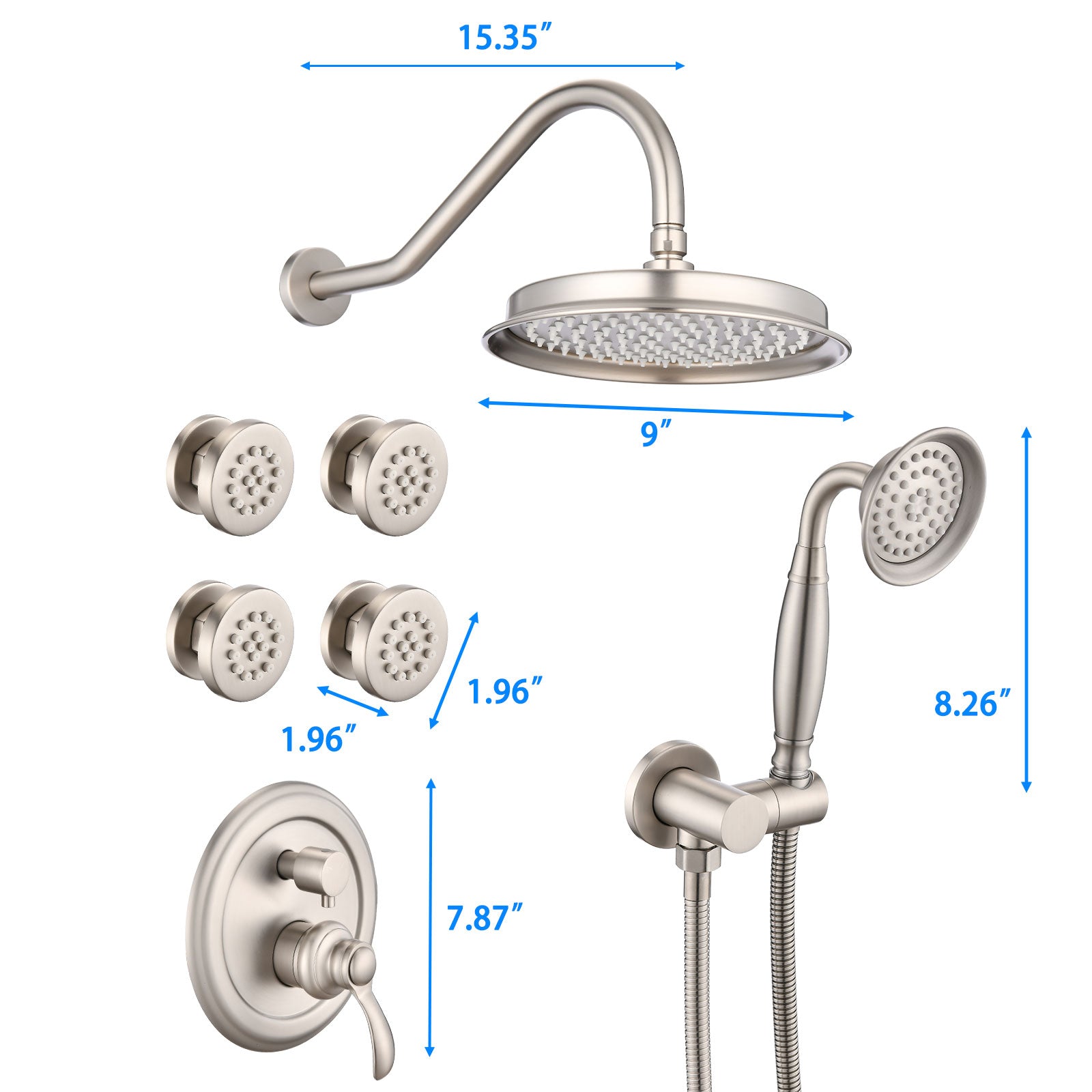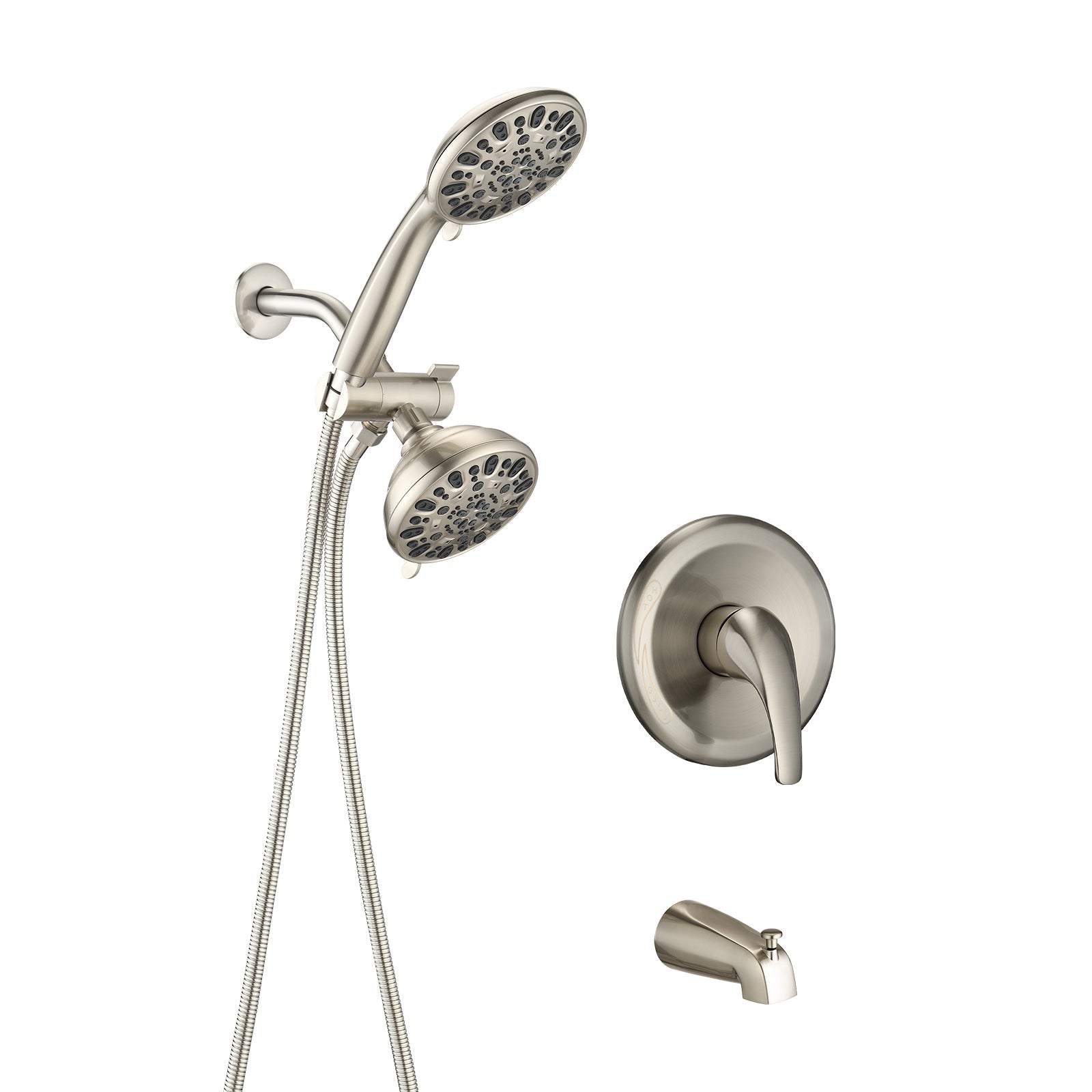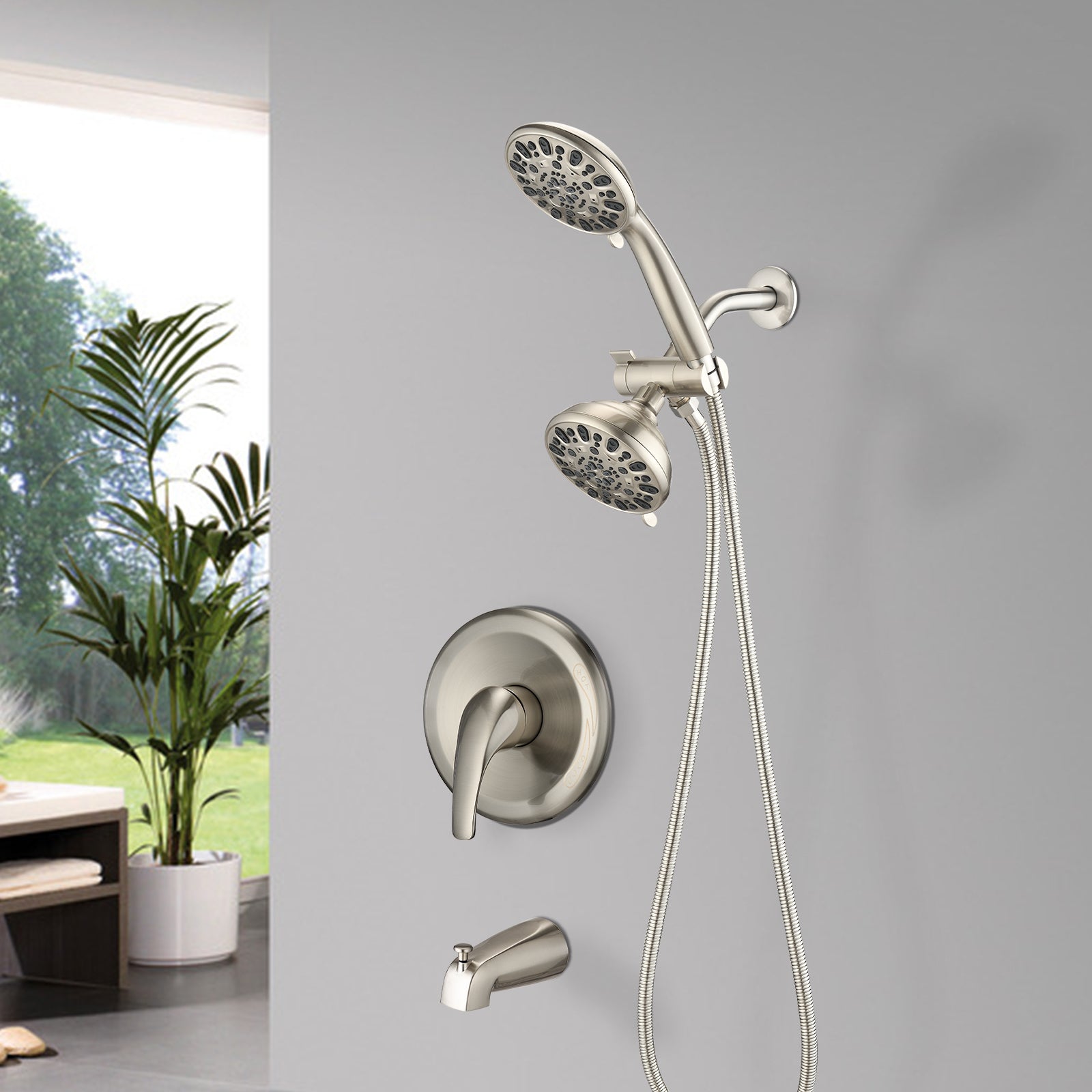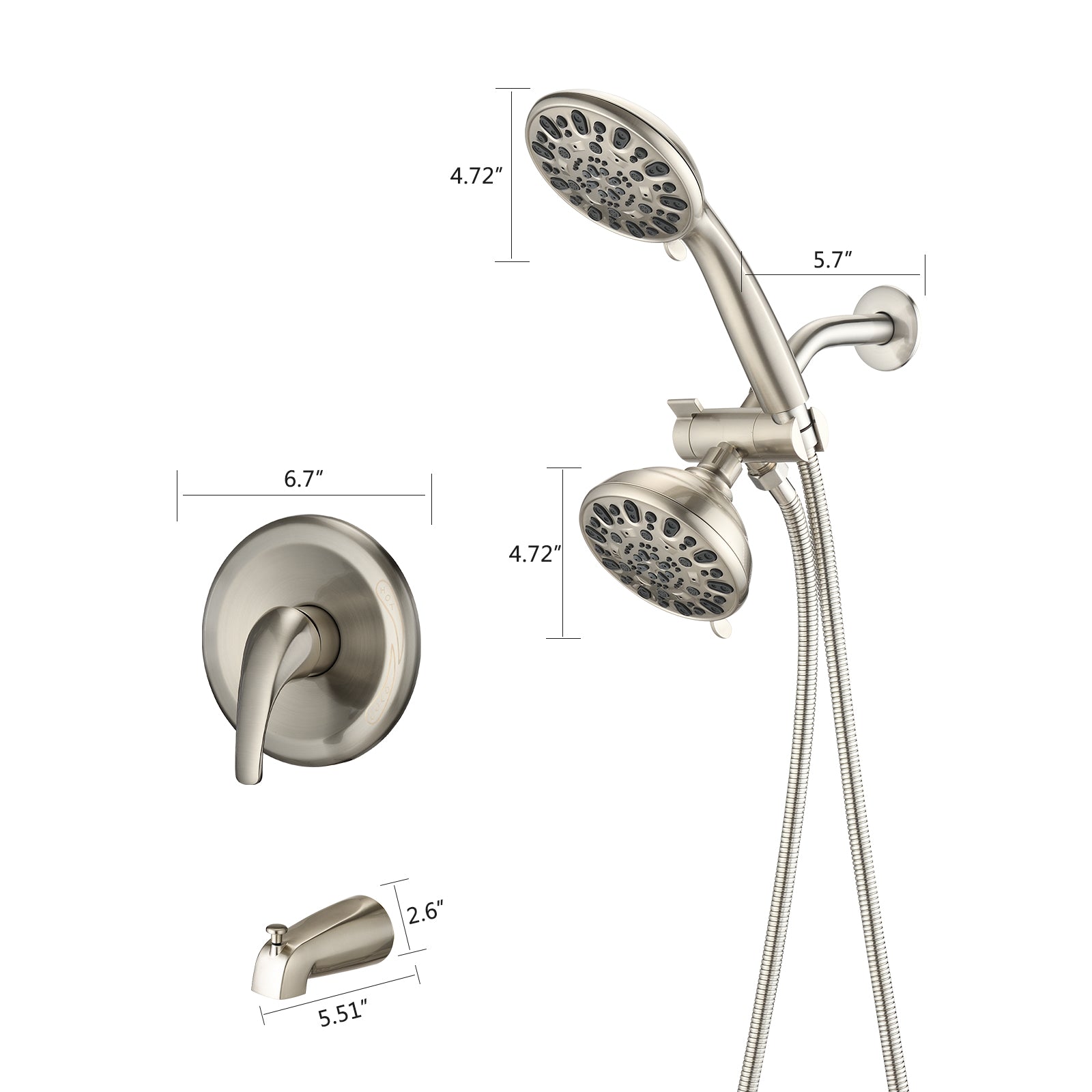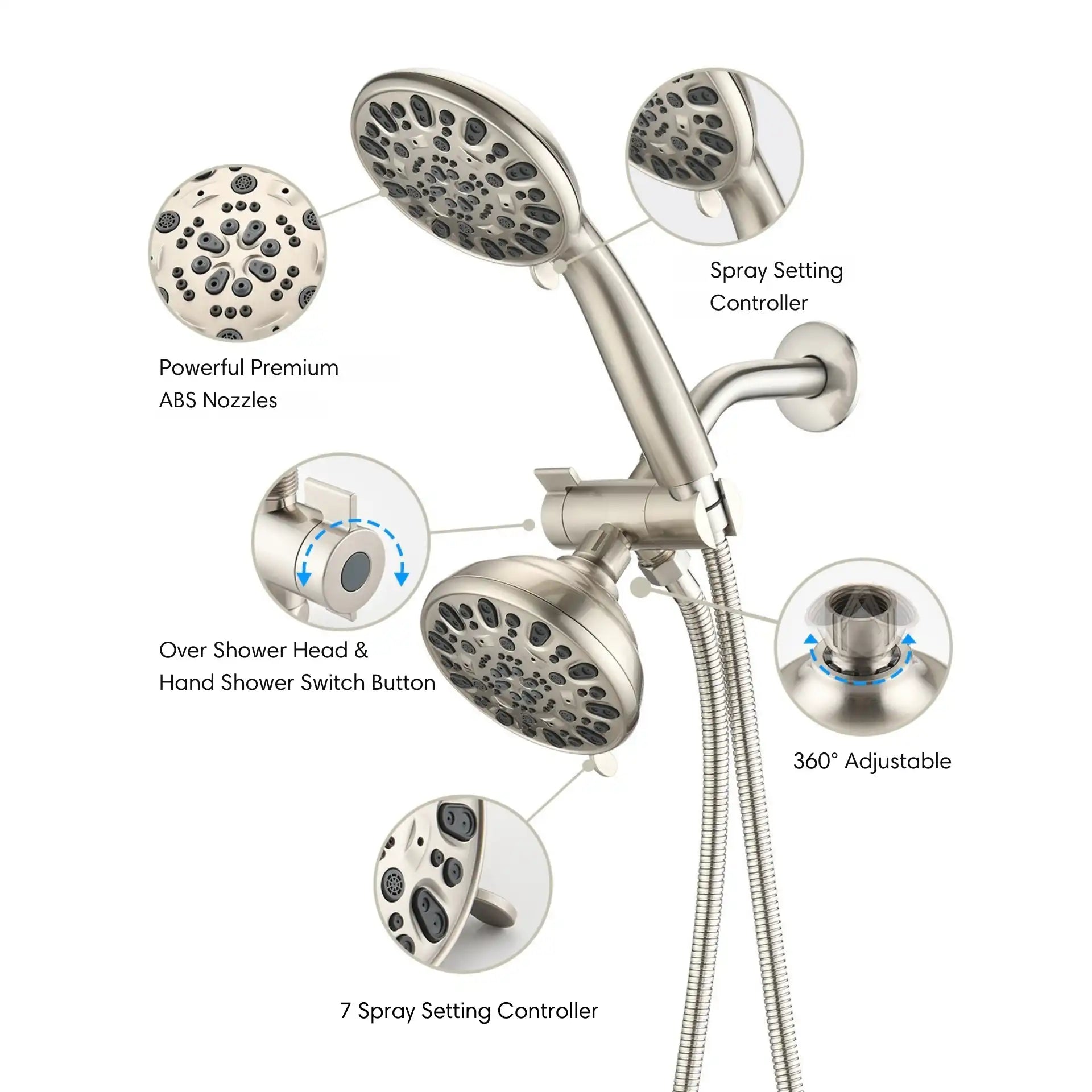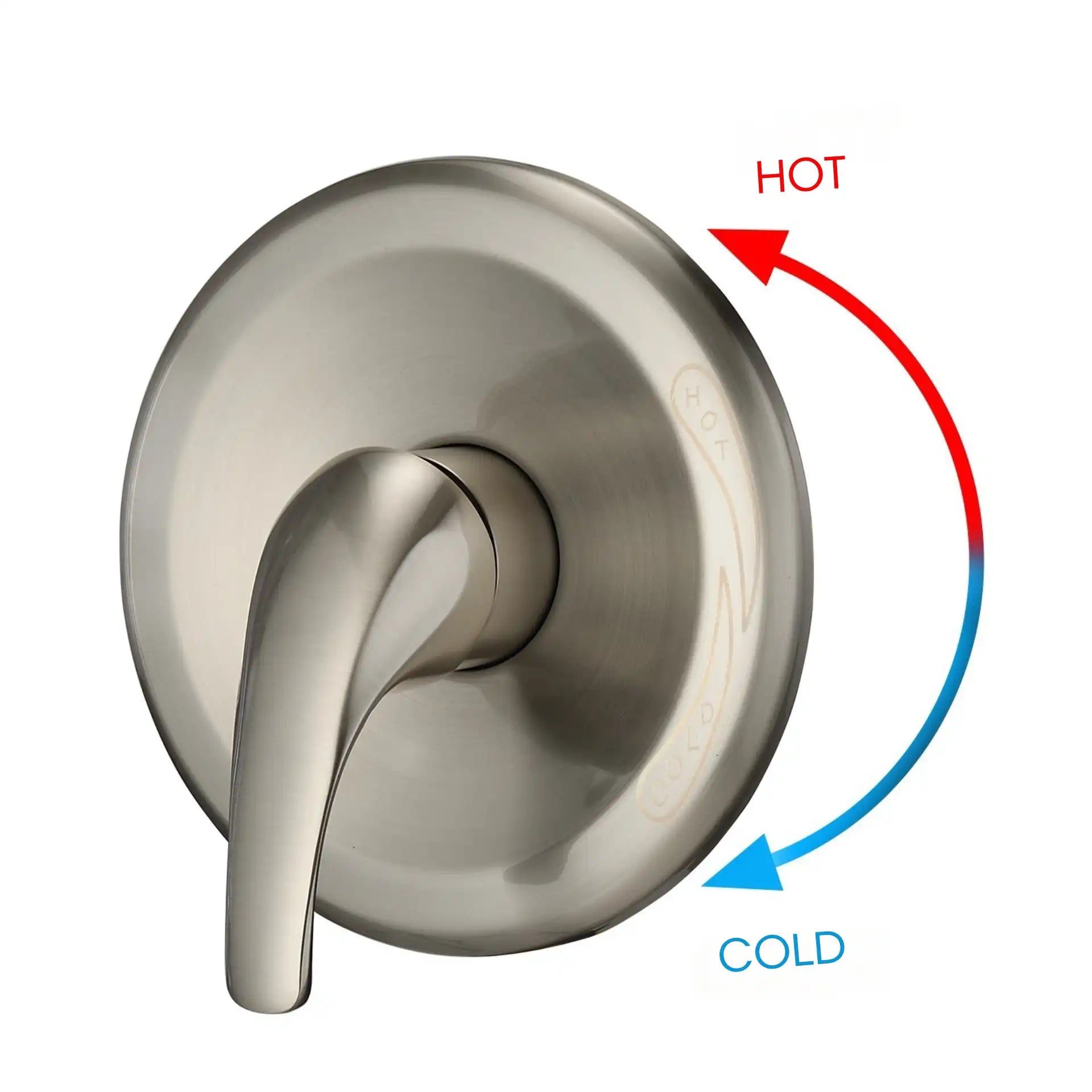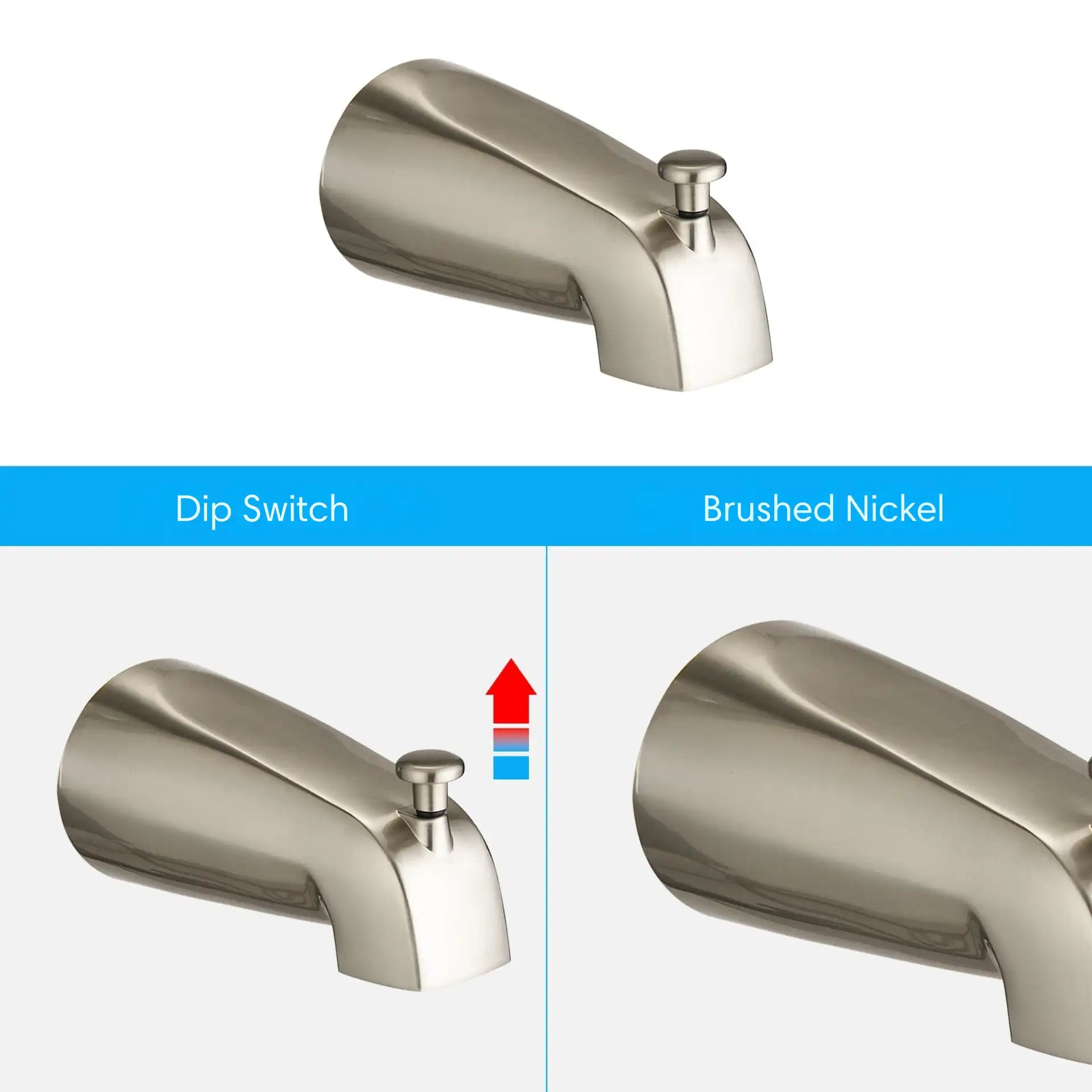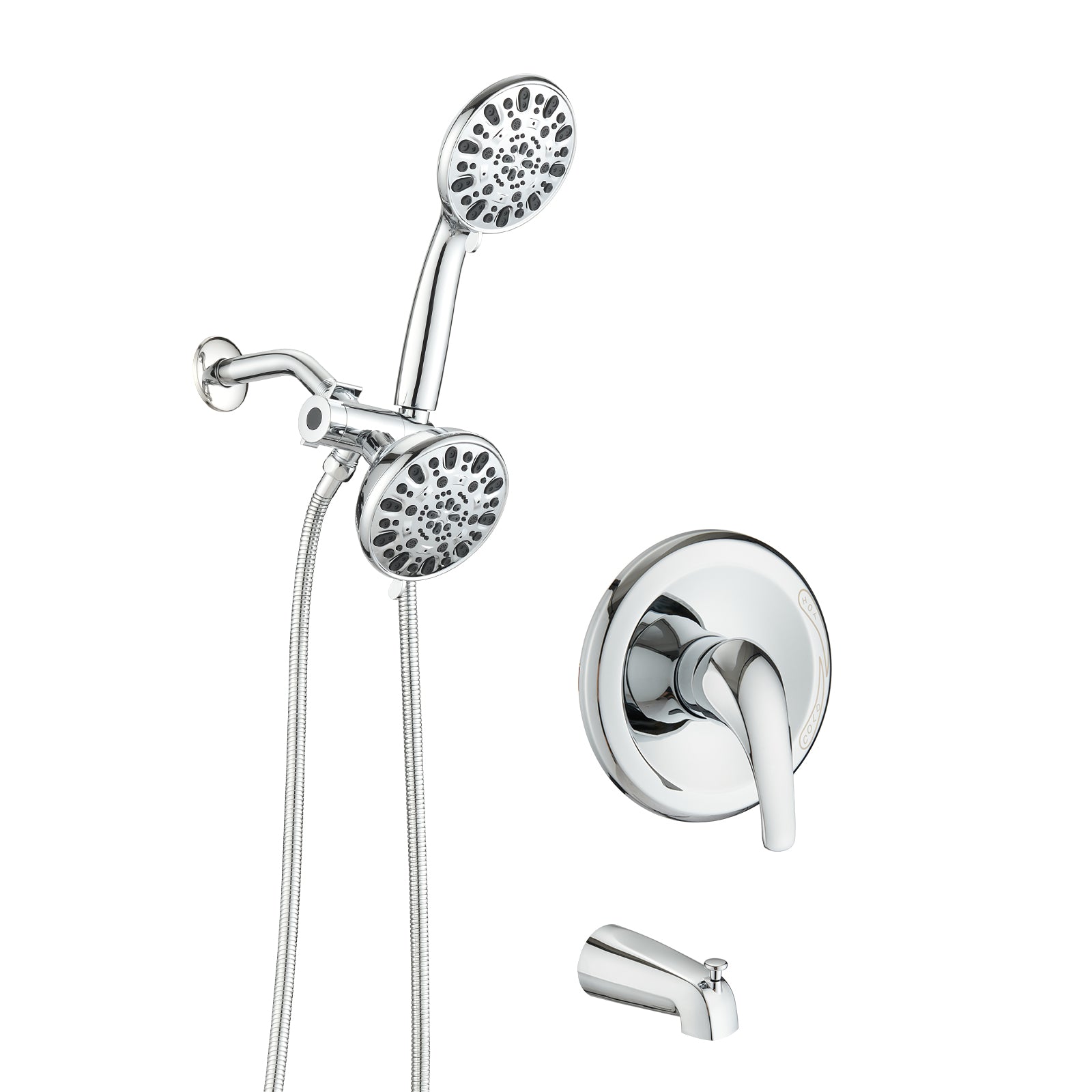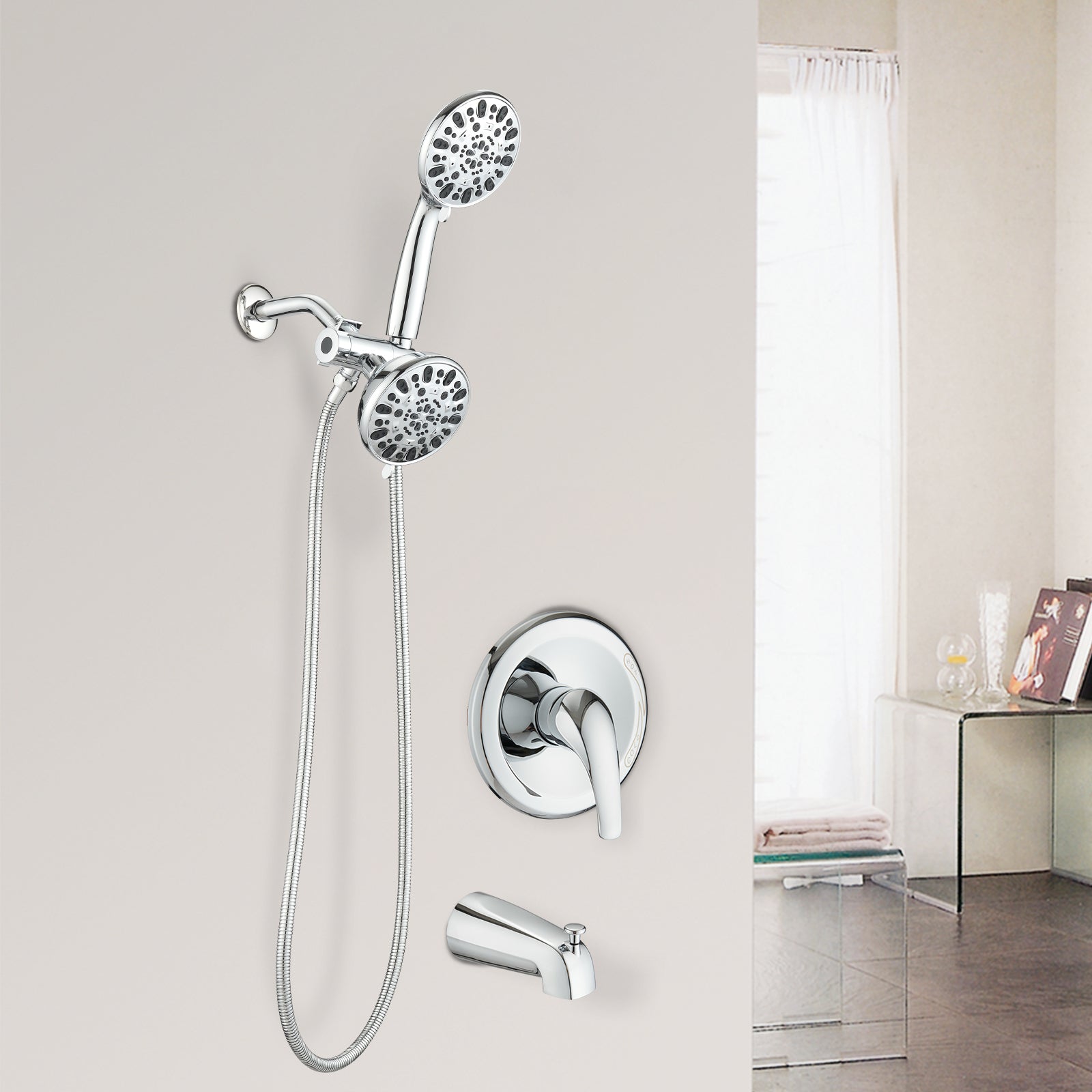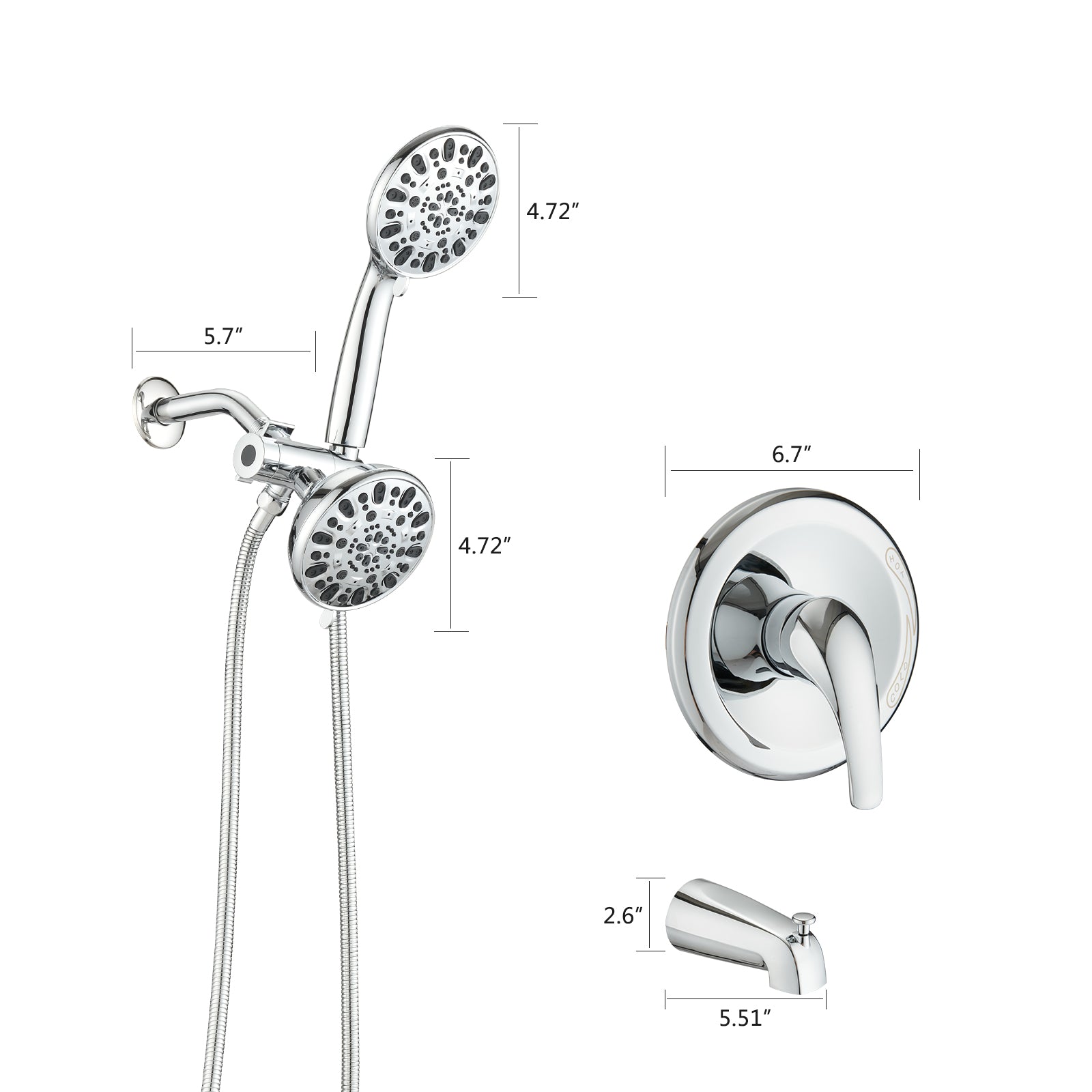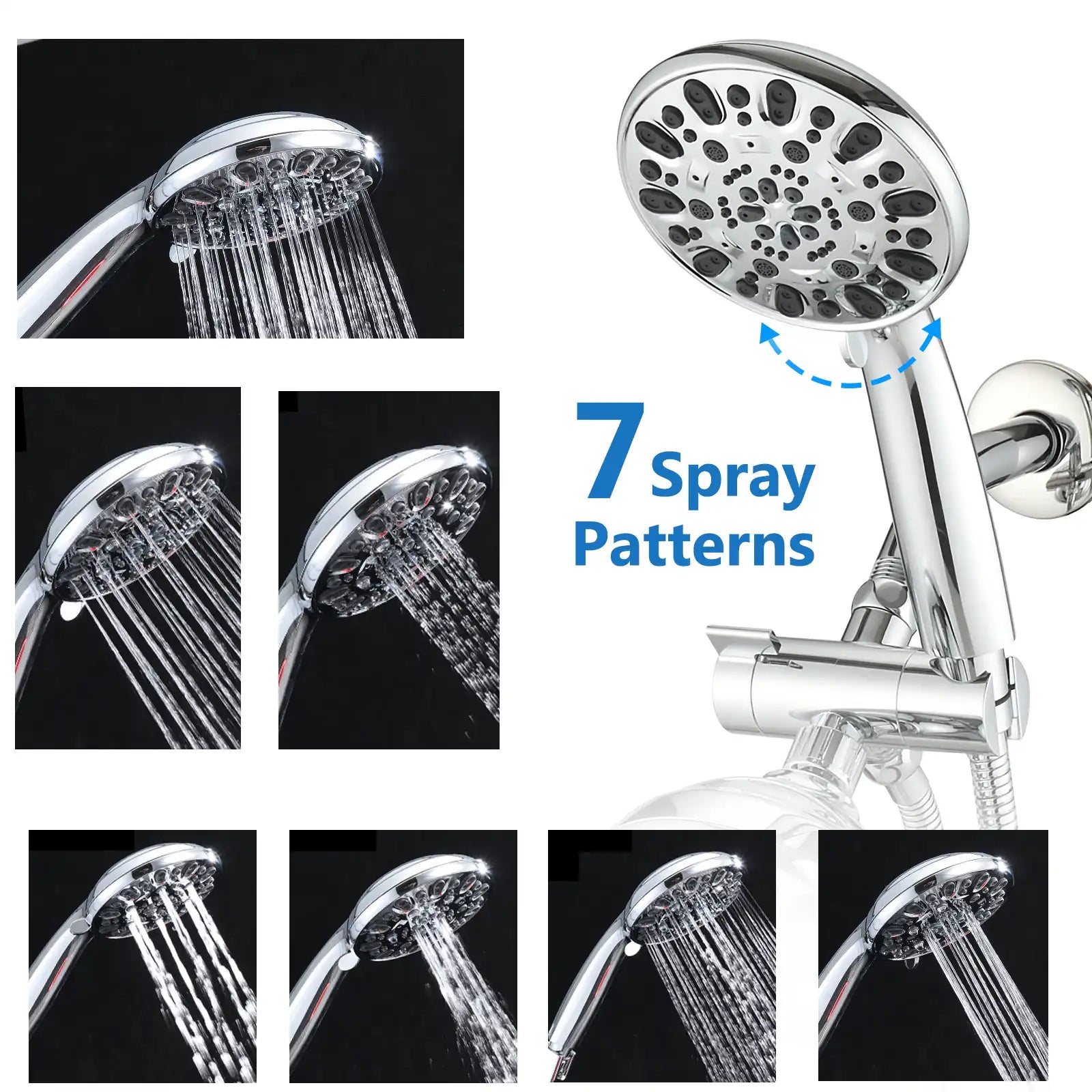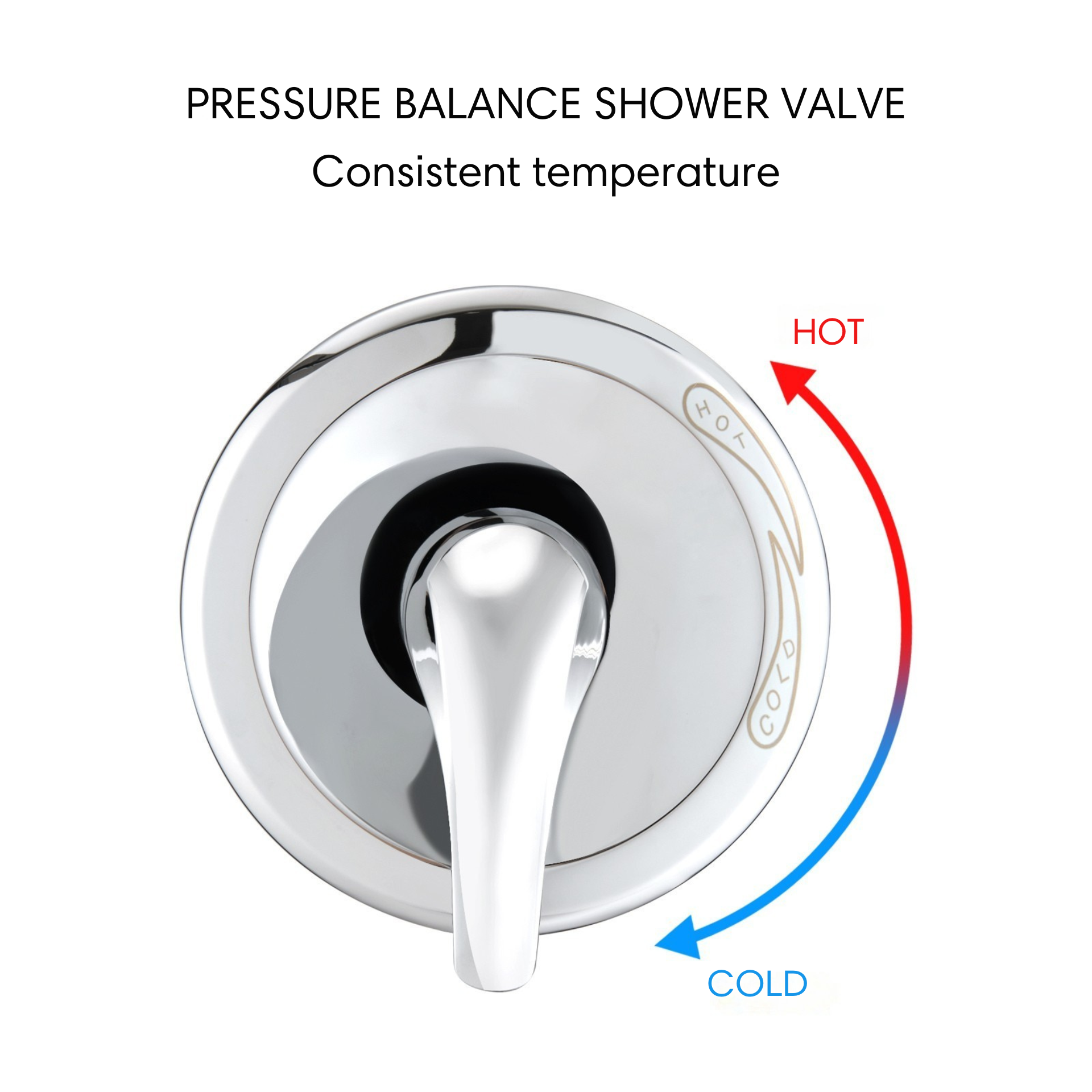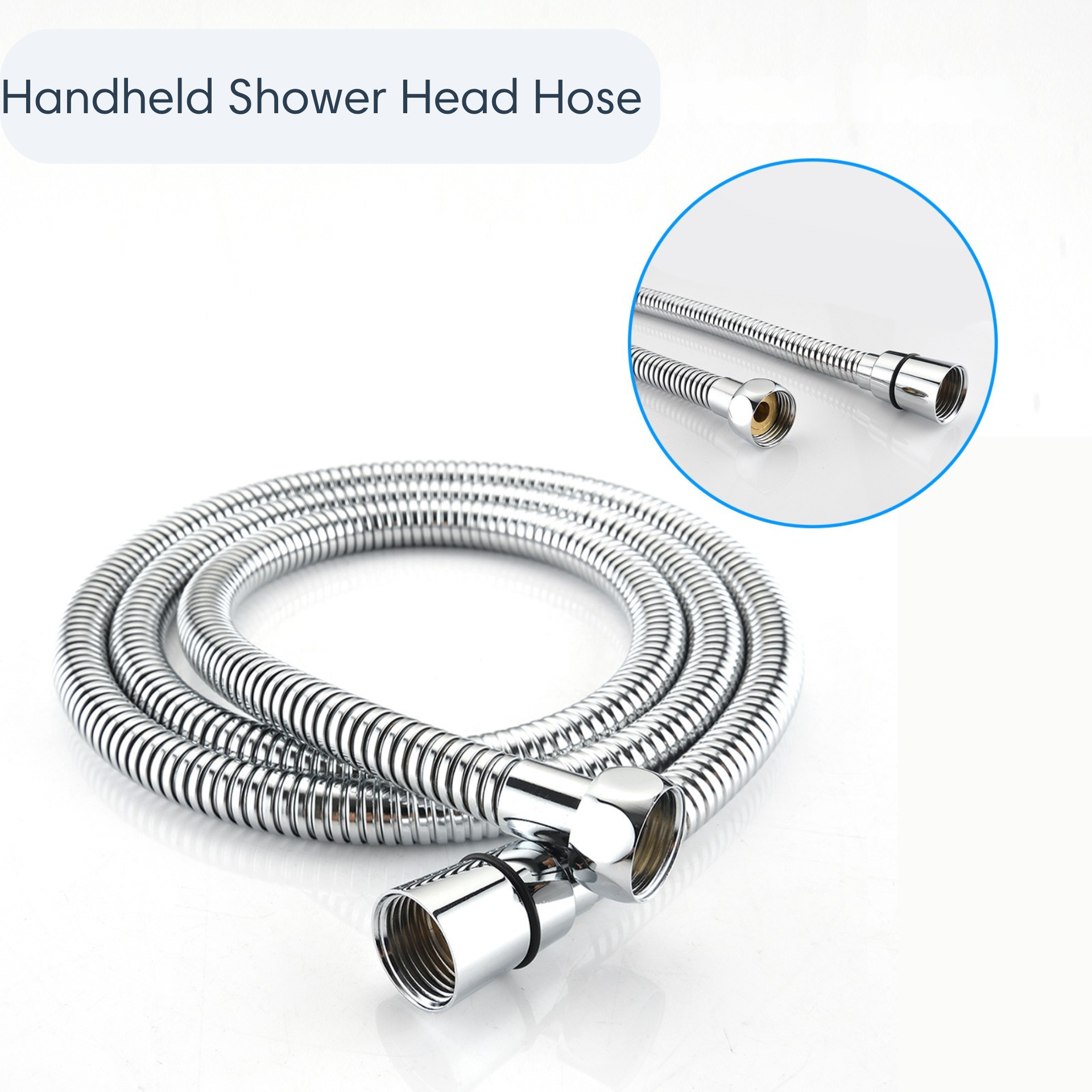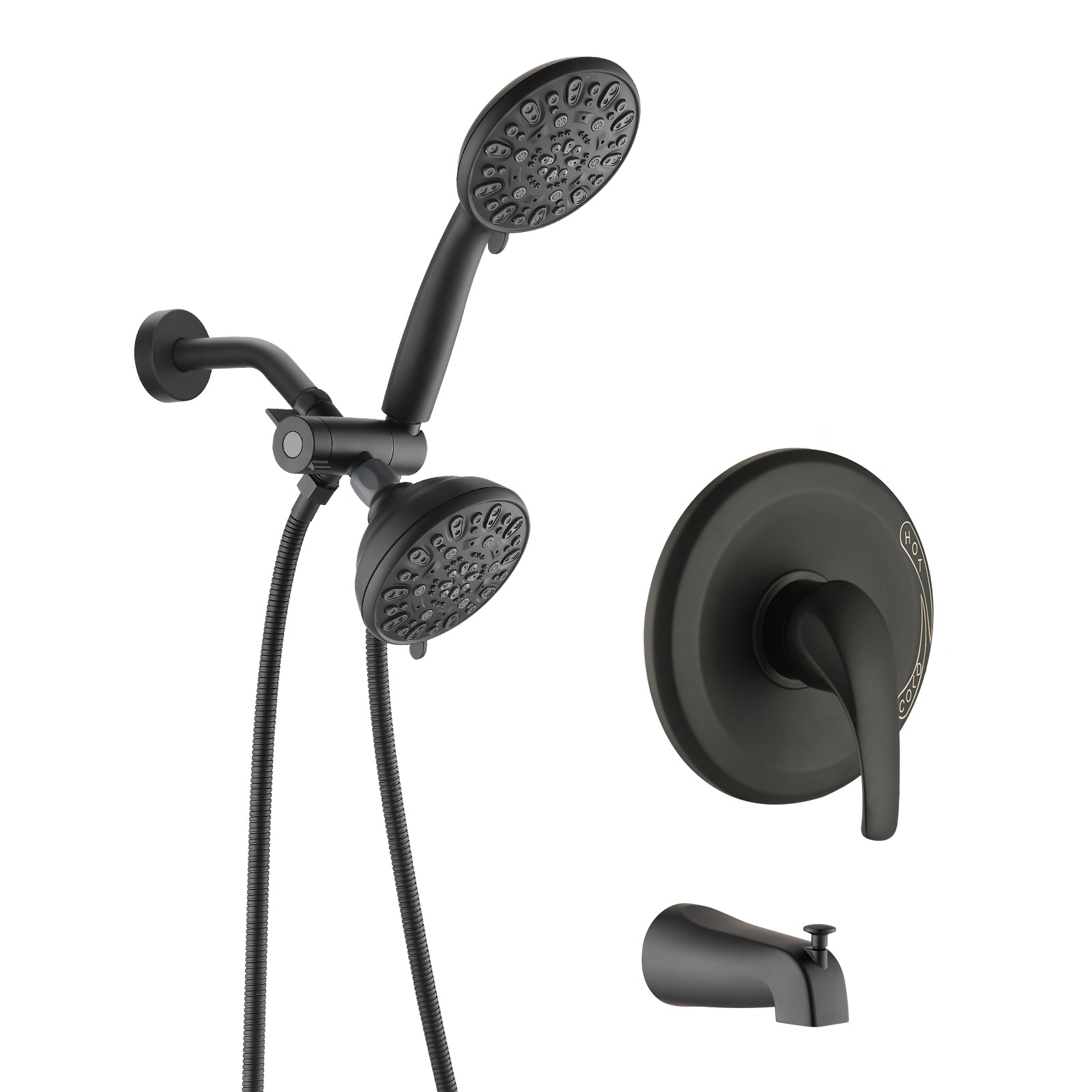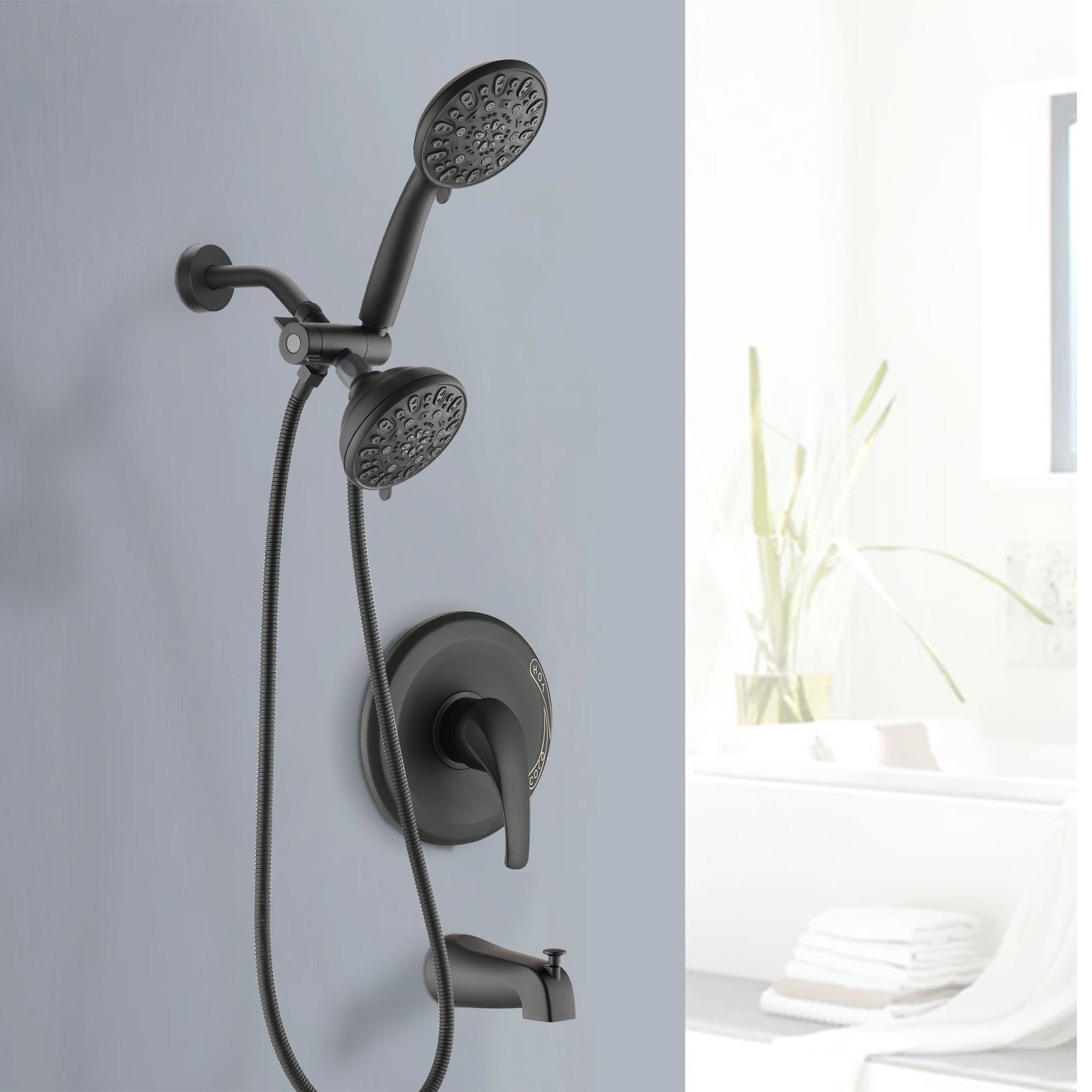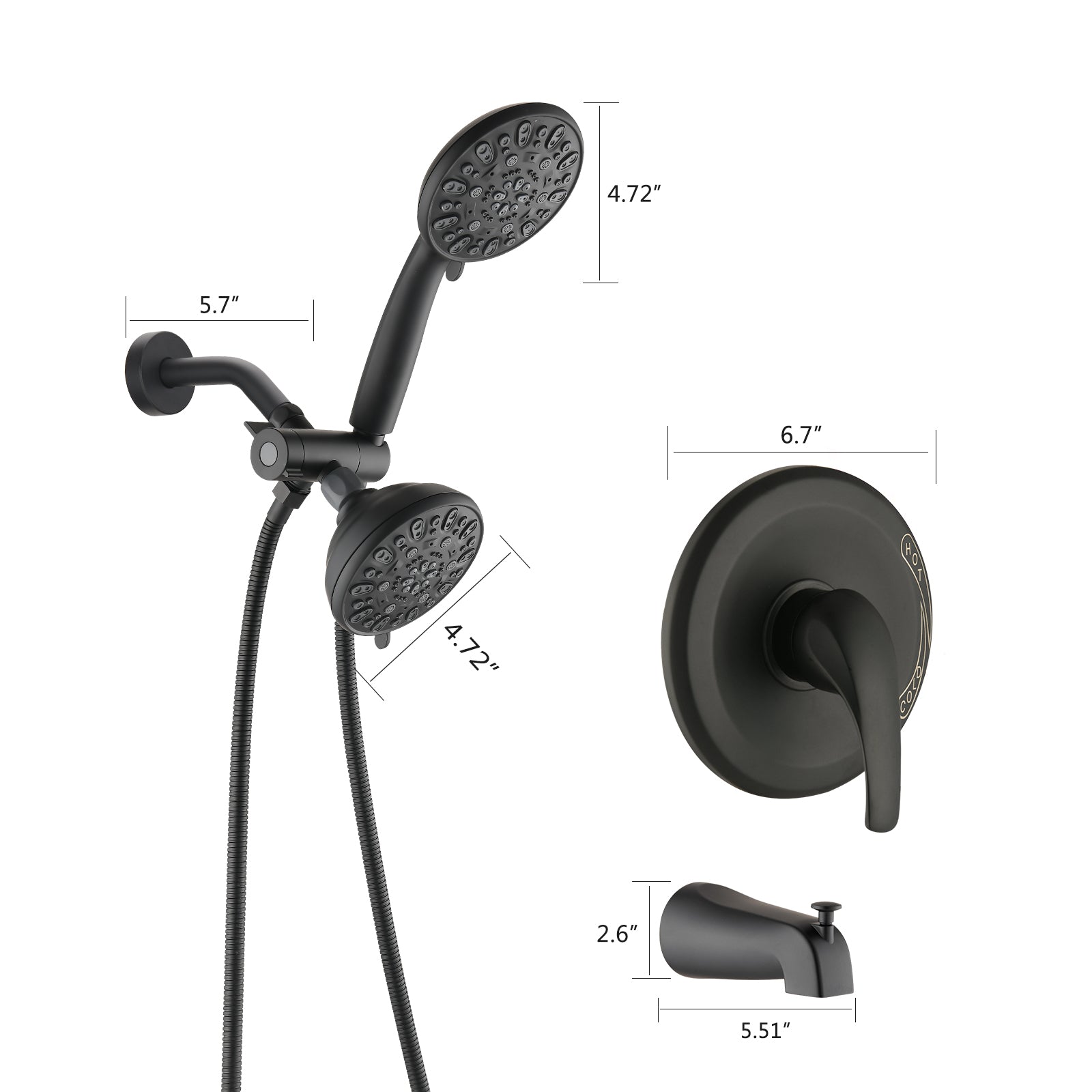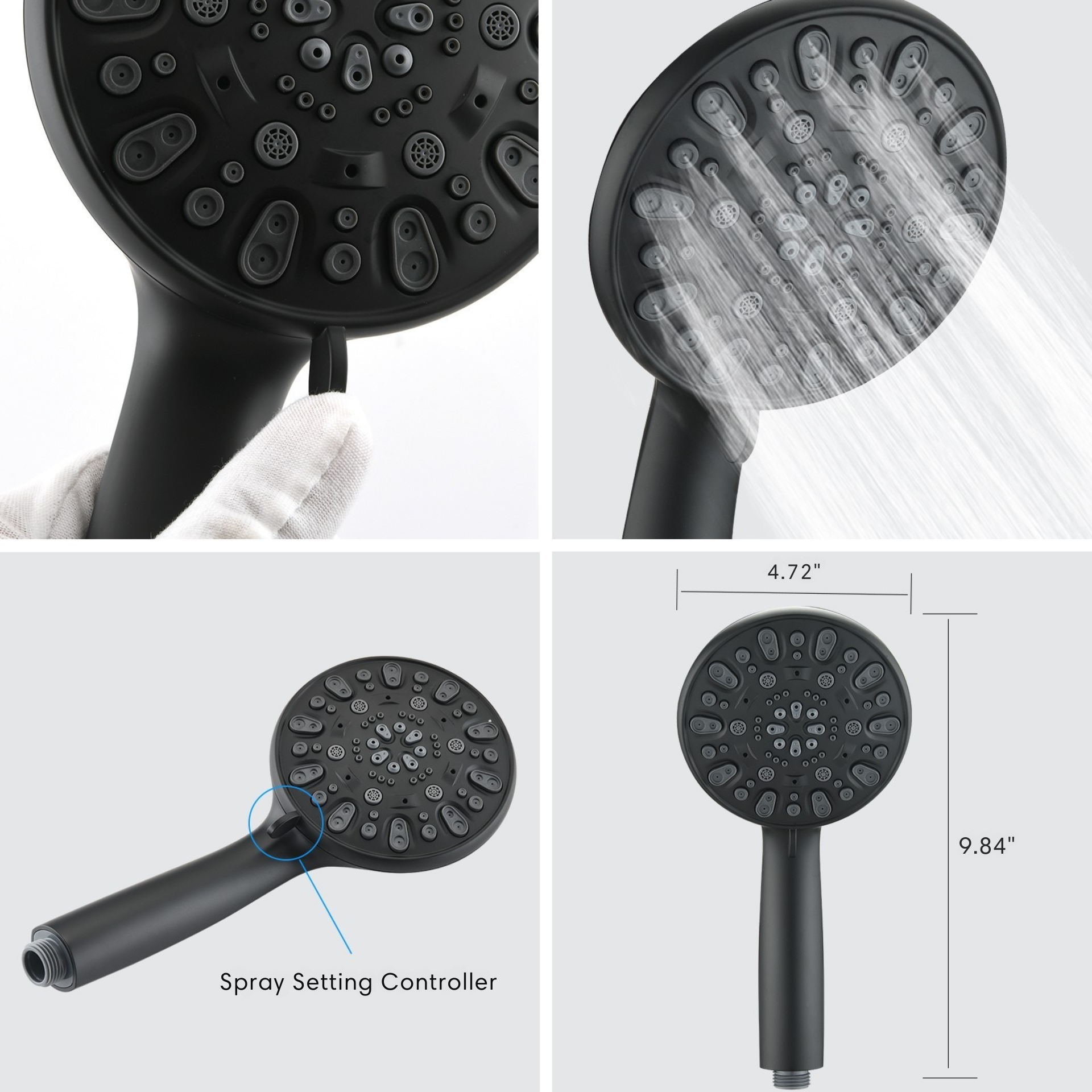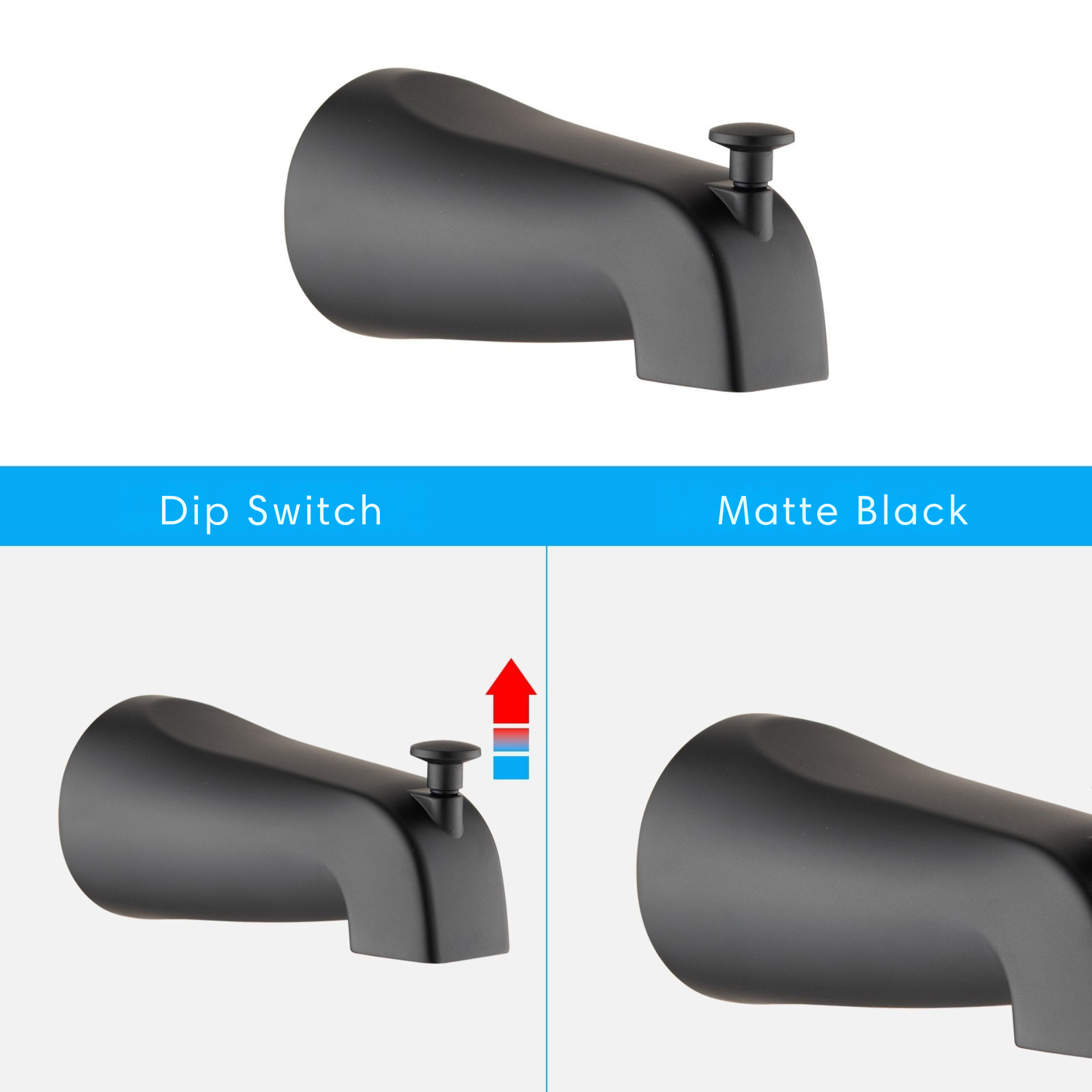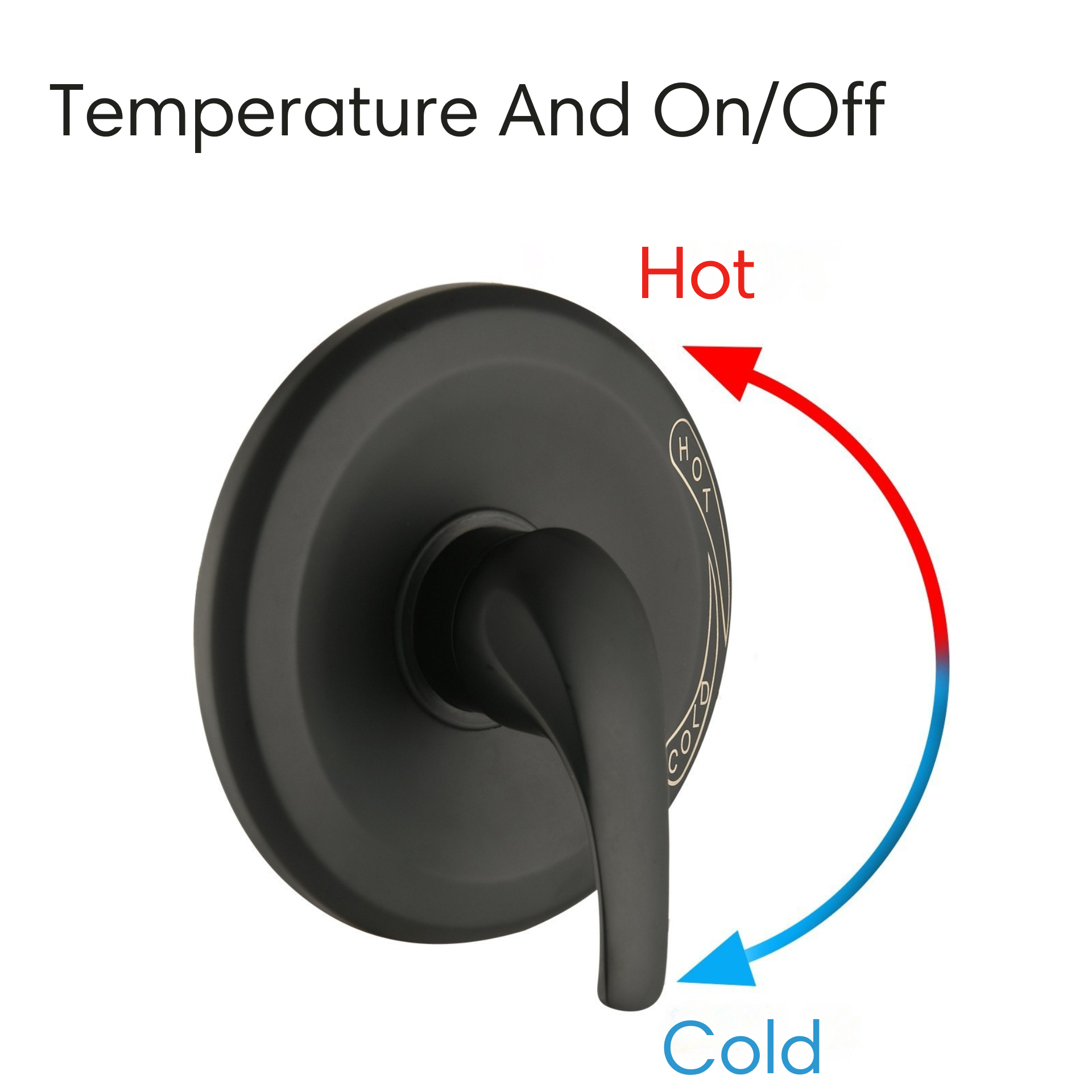Introduction
You turn on the shower, and the water is freezing; adjust the temperature, and suddenly it becomes boiling. The overhead spray is on, but your handheld feels like a trickle. The entire bathing experience feels like a daily battle with water.
Even worse, no matter how many times you replace the shower head, the problem never seems to go away. Why? Because the issue isn’t the shower head—it’s that you’ve been choosing the wrong bathroom shower systems all along.
Many people focus on tile colors and lighting layouts during renovations but overlook the one system they’ll use every single day. You spend money expecting comfort and end up with frustration. A system that should feel like self-care ends up feeling like a chore.
The good news? It’s not too late to fix it. In this article, we’ll break down the most popular types of bathroom shower systems in 2025—from thermostatic control and multifunctional water outlets to smart features and space-saving configurations. A comprehensive comparison will help you make a confident, personalized choice for your home.
1. What Are Bathroom Shower Systems? More Than Just a Best Shower System Showerhead
When searching for bathroom shower systems, many consumers imagine a simple handheld showerhead. But in reality, it’s a full system made of coordinated components, typically including:

- Rainfall showerhead
- Handheld shower wand
- Shower panel or thermostatic valve
- Water diverter or mixer
- Optional body jets, misting heads, or smart modules
These elements determine the flow type, pressure control, temperature stability, and the overall showering experience. Whether you want to use a rain head and hand shower at the same time, adjust the temperature in one second without scalding, or just finish showering in peace—you need the right bathroom shower system setup.
In addition, some high-end bathroom shower systems also incorporate ambient lighting, Bluetooth speakers, or steam options. These innovations elevate your shower from routine to rejuvenation. A thoughtfully designed setup not only improves comfort but transforms your entire perception of personal hygiene and relaxation. For those focused on wellness or stress relief, these extras make a surprisingly big difference.
2. Thermostatic Best Shower System vs Traditional Valves: Comfort You Can Trust
What’s the worst thing that can happen in the shower? Sudden blasts of cold water mid-rinse. Traditional mixing valves are vulnerable to water pressure fluctuations, which can cause sudden temperature swings.

Thermostatic bathroom shower systems, however, include temperature control cores or mechanical valves that:
- Automatically regulate hot and cold water mixing
- Prevent burns—especially important for households with children or elderly users
- Improve efficiency, helping reduce energy and water bills
These systems maintain a consistent temperature even when other appliances in the house (like toilets or washing machines) are in use. This level of reliability becomes essential in busy households or multi-person homes.
According to HomeAdvisor’s 2024 user survey, 87% of U.S. homeowners using thermostatic bathroom shower systems said bathing felt “more relaxing,” and they were willing to spend $150–$250 more for stable temperatures.
Thermostatic models also offer peace of mind for households with kids or seniors. With temperature-limiting valves, scalding incidents are virtually eliminated. Investing in a thermostatic bathroom shower system isn't just about luxury—it's about safety.
3. Multi-Function Best Shower System: Rainfall + Body Jets = At-Home Spa Vibes
Sometimes you don’t just want to clean—you want to feel refreshed, massaged, even pampered. That’s where multifunction bathroom shower systems shine, especially those combining:

- Overhead rainfall shower
- Handheld spray
- Side body jets or massage sprayers
These systems are ideal for:
- Homeowners who want hydrotherapy without leaving home
- Large master bathrooms or luxury remodels
- Design-savvy users who love an immersive experience
Rainfall spray offers gentle full-body coverage, while body jets provide targeted, rhythmic pressure. Some models offer pulsating modes, mimicking the hands of a masseuse. Others provide misting options for a calming spa-like atmosphere.
Paired with a thermostatic controller, this type of bathroom shower system creates a true in-home spa. Certain systems even allow you to adjust jet intensity or program different flow modes—for instance, energizing spray in the morning and calming mist at night.
According to Houzz, homes with 3+ shower outlet points see an average 8% increase in resale value. That’s not just better bathing—it’s better equity.
4. Concealed vs Exposed Panels in the Best Shower System: Sleek or Simple?
When planning your bathroom, choosing between a concealed or panel-style system is key.
Concealed bathroom shower systems:

- Hide all plumbing inside the wall
- Deliver a clean, minimalist appearance
- Are best for new builds or full renovations
- Can be harder to repair if problems arise
Exposed panel bathroom shower systems:

- Mount onto the wall surface
- Easier to install—ideal for remodels or rentals
- Often modular, combining rain head, handheld, and mixer in one panel
- Offer more accessible maintenance
Another benefit of exposed systems is flexibility—many models can be retrofitted without opening up walls, which can save thousands in renovation costs. If you're working on a tight budget or in a rental property, this type of bathroom shower system is often the smartest choice.
Both types serve different needs. If you want a streamlined aesthetic and are already gutting the space, go concealed. If you want convenience and flexibility, panel systems are your best friend.
5. Smart Best Shower System: Not the Future—It’s Now
Why wait for hot water when you can control it from your phone?

Smart bathroom shower systems allow you to:
- Set temperature presets for each family member
- Use voice commands with Alexa or Google Assistant
- Monitor water usage and create custom shower routines
- Turn on the water remotely before you even get out of bed
Some smart systems even allow music control, shower duration tracking, and smartphone integration with scheduling apps. This automation is not just cool—it’s practical for parents, busy professionals, or anyone looking to conserve time and water.
According to Forbes Home (2024), homes with smart-enabled bathroom shower systems reported 93% higher user satisfaction, especially regarding morning routine efficiency and water savings. Many buyers now consider these smart features a must-have rather than a luxury.
Brands like Moen, Kohler, and GROHE lead the market in this space. If convenience and control matter to you, smart integration is a no-brainer.
6. Small Bathrooms Deserve Big Experiences with the Best Shower System
Think you can’t have a great system in a small space? Think again.
There are many compact bathroom shower systems designed for apartments, townhouses, and tight layouts. These options don’t skimp on features—they just optimize them.
Great solutions include:
- Vertical column systems with shared rain + hand spray
- Corner-mounted concealed setups to save wall space
- Slide rail kits with adjustable height and flexible hose length
Wall-mounted storage shelves, dual-function valves, and multi-setting heads are also becoming more compact without sacrificing quality. These features make small-space shower systems just as luxurious as full-size versions.
Additionally, many manufacturers now offer ADA-compliant or low-profile bathroom shower systems, perfect for aging-in-place renovations or accessible design. These options prove that size doesn’t have to limit satisfaction.
7. What’s the Best Shower System for Your Budget?
Choosing the right bathroom shower system isn’t about the most expensive—it’s about what makes sense for your needs and wallet.

- $150–$300: Entry-level panel kits with basic rain + handheld combos
- $300–$600: Thermostatic systems with upgraded aesthetics and comfort
- $600–$1200+: Multi-function or smart-enabled systems for high-end bathrooms
When choosing, factor in not just upfront cost but also long-term savings from energy-efficient options. Many mid-tier bathroom shower systems now include eco-flow restrictors, self-cleaning nozzles, and anti-scald features—adding lifetime value.
Shopify data shows that products in the $350–$450 price range had the highest conversion rates and customer satisfaction, making this a sweet spot for most homeowners.
If your goal is to boost home resale value while improving daily life, selecting a mid- to high-range bathroom shower system could be your best investment.
8. Maintenance Schedule Checklist for Best Shower System
Regular care is the key to keeping your best shower system performing like new. By following a simple, consistent maintenance plan, you can ensure stable water pressure, precise temperature control, and a flawless appearance for years to come.
| Frequency | Task | Why It Matters |
|---|---|---|
| Monthly | Clean showerhead and spray nozzles | Keeps best shower system water flow smooth and prevents limescale build-up |
| Quarterly | Inspect thermostatic valve & controls | Ensures consistent temperature and safe operation |
| Every 6 Months | Check hoses, seals, and joints | Prevents leaks, protects walls, and extends best shower system lifespan |
| Annually | Polish metal surfaces & descale panels | Maintains appearance and performance |
| As Needed | Update smart features & firmware | Keeps your smart best shower system running at peak efficiency |
Conclusion
Upgrading your bathroom shower system isn’t just a home improvement—it’s a lifestyle upgrade.
Whether it’s stable water temperature, spa-style features, smart functionality, or simply better daily comfort, a well-designed bathroom shower system can transform your routine. You’ll look forward to every shower instead of dreading it.
Ready to stop settling and start upgrading?
Browse our curated collection of bathroom shower systems—designed for every space, every budget, and every lifestyle.
FAQ
1.Can the best shower system work in homes with low water pressure?
Yes. Many brands offer low-pressure-compatible systems or booster pump options to ensure stable water flow.
2. Will a smart best shower system still function during power outages?
Basic water flow will still work, but smart features like presets and remote access will pause.
3. Can renters install the best shower system?
Absolutely. Surface-mounted systems are renter-friendly, easy to install, and fully removable when moving out.
4. Do multi-function best shower systems use too much water?
Not necessarily. Most modern systems include flow restrictors and eco modes to help manage consumption efficiently.
5. Is the best shower system compatible with standard plumbing in the U.S.?
Yes. Most systems use the standard ½-inch NPT connection, though some imported brands may require adapters.
6. How long can a best shower system typically last?
With proper maintenance, high-quality systems can last 10–15 years. Choosing corrosion-resistant materials like stainless steel and brass can further extend lifespan.
7. Can I upgrade just one part of my best shower system without replacing everything?
Yes. Modular systems allow you to replace individual components like showerheads, valves, or panels, depending on compatibility.
Related Articles:
Stress-Free Routines Start with Shower and Handheld Systems
How to Choose the Best Shower and Handheld Systems: 5 Essential Tips
How to Choose the Best Shower System with Body Jets – 5 Key Tips
